
Discover the foods with the most protein, healthiest fats and a lot of vitamins ever.
Buying healthy, nutritious food doesn’t simply mean you’ll be eating tasty dishes; when you consume healthy foods, you help to improve your total health – whether that’s structure muscle, sharpening your mind, or strengthening your heart.
The next time you drop by the market or order up a food delivery, make sure your grocery list consists of as many of these foods as possible.
Top 10 Stinkiest Foods on the Planet
Each of these 100 healthiest, the majority of nutritious foods on earth possesses special health-promoting powers to result in your healthiest and happiest life. And if you’re looking for more ways to remain on course with your healthy eating goals, here are 21 Best Healthy Cooking Hacks of All Time you should attempt!
Fruits &Veggies

Newsflash: Vegetables can help you lose weight!
Okay, fine, we admit that’s not exactly breaking news, but did you know that when it comes to fast weight reduction some veggies reign supreme while others fall fairly flat in contrast? It’s true! Thanks to their particular dietary profiles, specific produce-aisle choices can help you trim down by revving your metabolism, turning off stubborn belly fat genes, and frying flab– which’s on top of all their other health-boosting benefits. Read on to discover which tasty picks fit the costs and discover delicious methods to include them into your diet.
1. Spinach

Popeye’s favorite veggie is an excellent source of not only protein, but likewise vitamins A and C, antioxidants and heart-healthy folate. One cup of the green superfood has nearly as much protein as a hard-boiled egg– for half the calories. Seeking to get the biggest dietary bang for your buck? Be sure to steam your spinach instead of eating it raw. This cooking technique assists maintain vitamins and makes it much easier for the body to soak up the green’s calcium content. Include a handful to soups, protein shakes, omelets, pasta dishes, and vegetable stir-fries, or simply steam it and top with pepper, garlic, olive oil and a capture of lemon.
2. Mustard Greens
Another vegetable worthy of an area in your diet is mustard greens. When steamed, they provide a whopping 922 percent of your RDI for vitamin K, 96 percent of your vitamin A, and 47 percent of your vitamin C per cup, and they have a host of disease-fighting homes thanks to their high glucosinolate material. Glucosinolates are plant chemicals that your body converts into isothiocyanates, which have been revealed to ward off cancer. In fact, according to a review in the journal Current Pharmaceutical Style, glucosinolates might secure against and may even represent a healing method versus several kinds of the lethal disease.
3. Kale
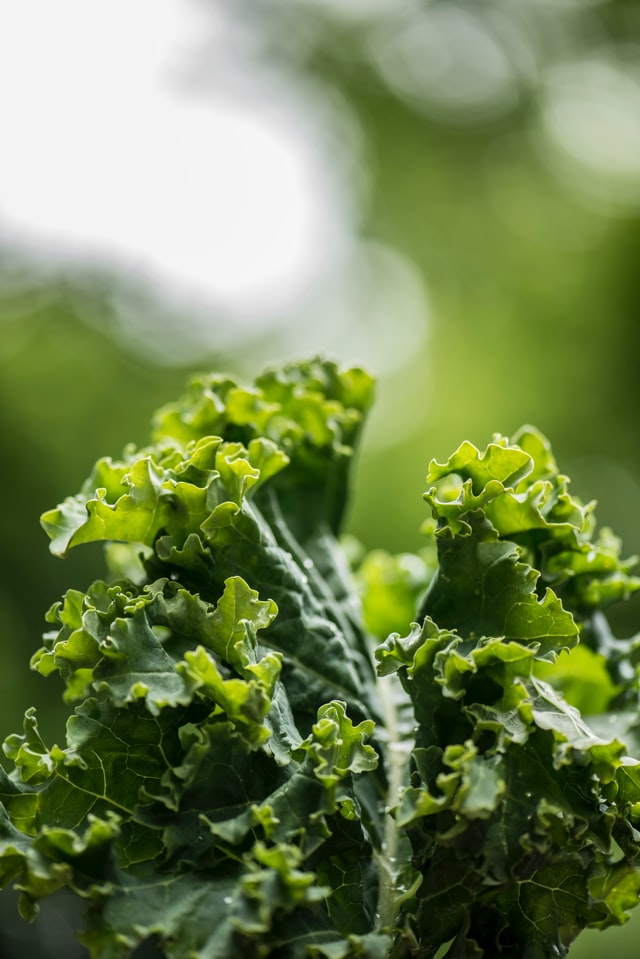
Kale has certainly had its minute in the sun (and after that some) however as far as healthy veggies go, it’s definitely deserving of appreciation. The cruciferous green (which is even available in McDonald’s these days) is packed with health-boosting nutrients like vitamin A, phosphorus, and B vitamins like folate, and it boasts two times the vitamin C as spinach, another dietary super star. A research study in the journal JRSM Cardiovascular Disease discovered that a high day-to-day usage of green leafy and cruciferous veggies (such as kale) substantially reduced occurrence of several types of cardiovascular disease, the leading cause of death amongst females in the U.S. And since the veggie is as versatile as they come, feel complimentary to include some kale to an array of meals varying from egg dishes to tacos, and drinks such as juices and healthy smoothies.
4. Watercress
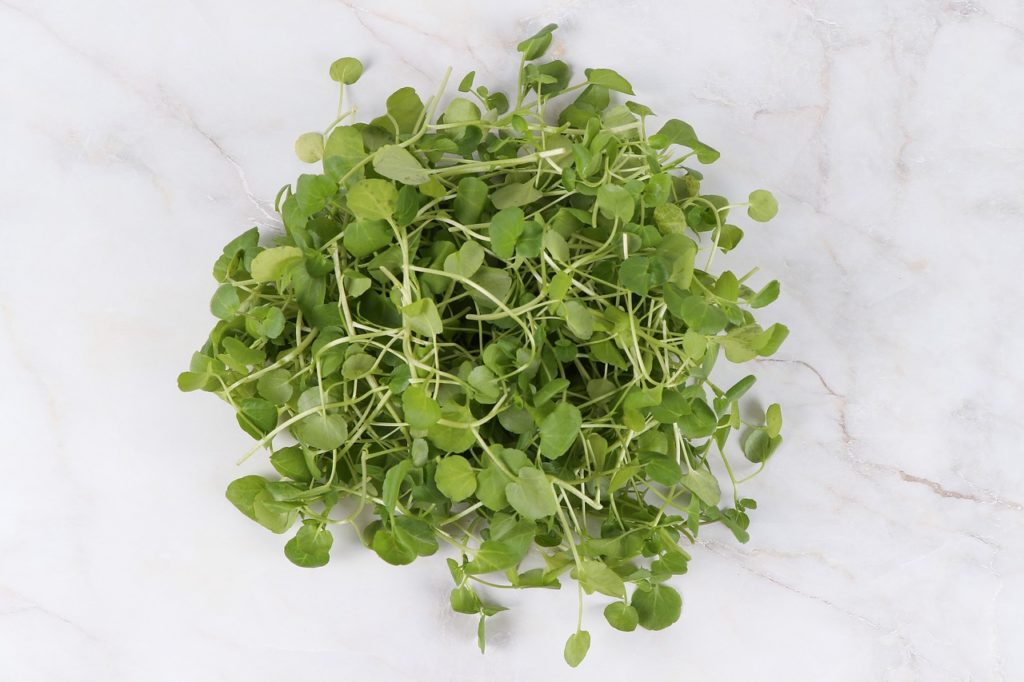
The next time you’re making a salad, why not throw some watercress in there? The green vegetable is an exceptional source of folate, which has been shown to stimulate weight reduction. A research study in the British Journal of Nutrition discovered that those with the greatest folate levels lose about 8.5 times more weight when dieting than those with the least expensive levels of folate. What’s more? A separate study in the British Journal of Cancer found that higher dietary folate intake reduces breast cancer danger. In addition to watercress, other great sources of folate consist of spinach, asparagus, and papaya.
5 Sun-Dried Tomatoes
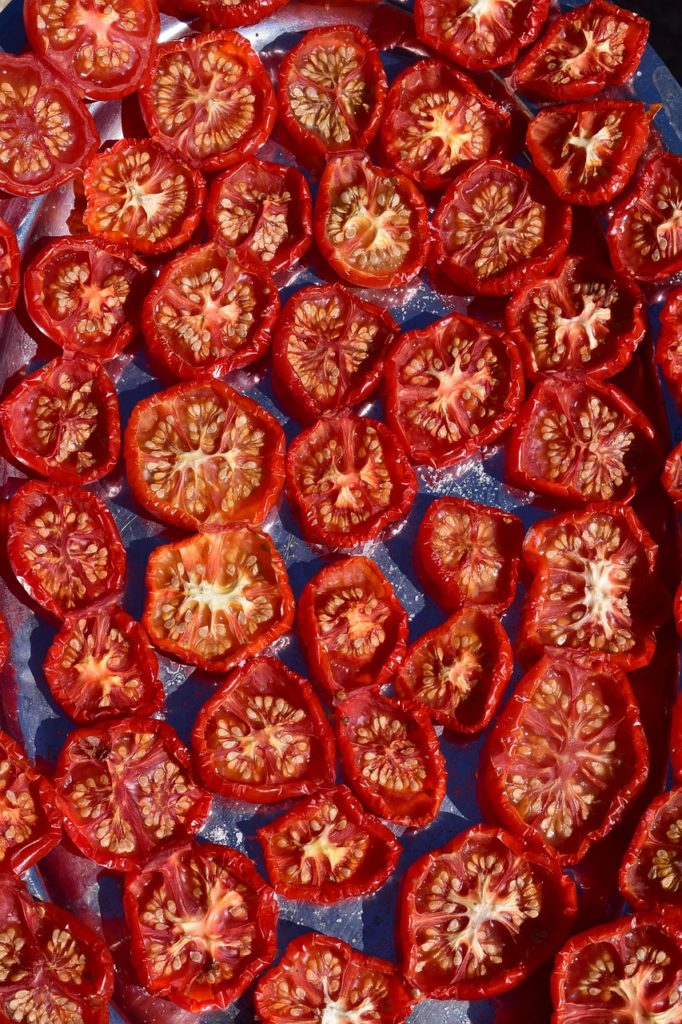
Tomatoes are packed with the antioxidant lycopene, which studies show can decrease your danger of bladder, lung, prostate, skin, and stomach cancers, along with minimize the risk of coronary artery disease. Just one cup of the sun-dried variation will provide you 6 grams of satisfying protein, 7 grams of fiber and 75 percent of your RDA of potassium, which is necessary for heart health and tissue repair work. They’re also rich in vitamins A and K. Usage them as a pizza topping, a tasty addition to salads, or snack on them right out of the bag.
6. artichokes
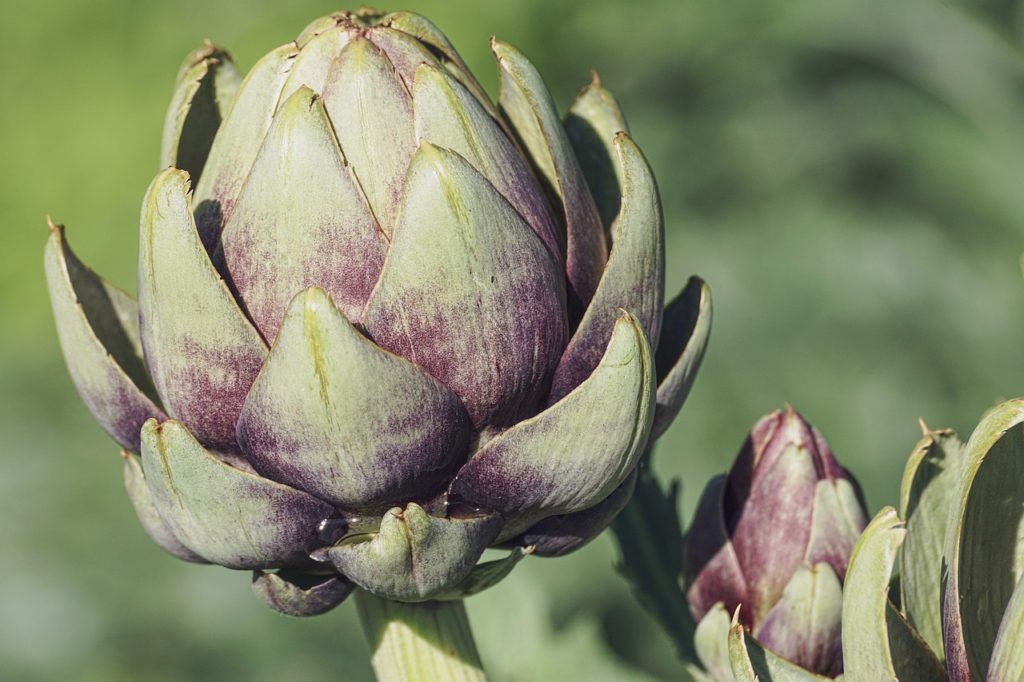
Ghrelin is your body’s “I’m starving” hormonal agent, which is reduced when your stomach is full, so eating satiating high-fiber and high-protein foods is a no-brainer. The humble artichoke is a winner on both counts: It has nearly twice as much fiber as kale (10.3 g per medium artichoke, or 40 percent of the daily fiber the typical woman needs) and one of the greatest protein counts among vegetables. Boil and eat the whole shebang as a self-contained salad (why not add a little goat cheese and sun-dried tomatoes?), toss the leaves with your favorite greens and dressing, or peel and pop the hearts onto healthy pizzas and flatbreads and lose stomach fat.
7. Green Peas
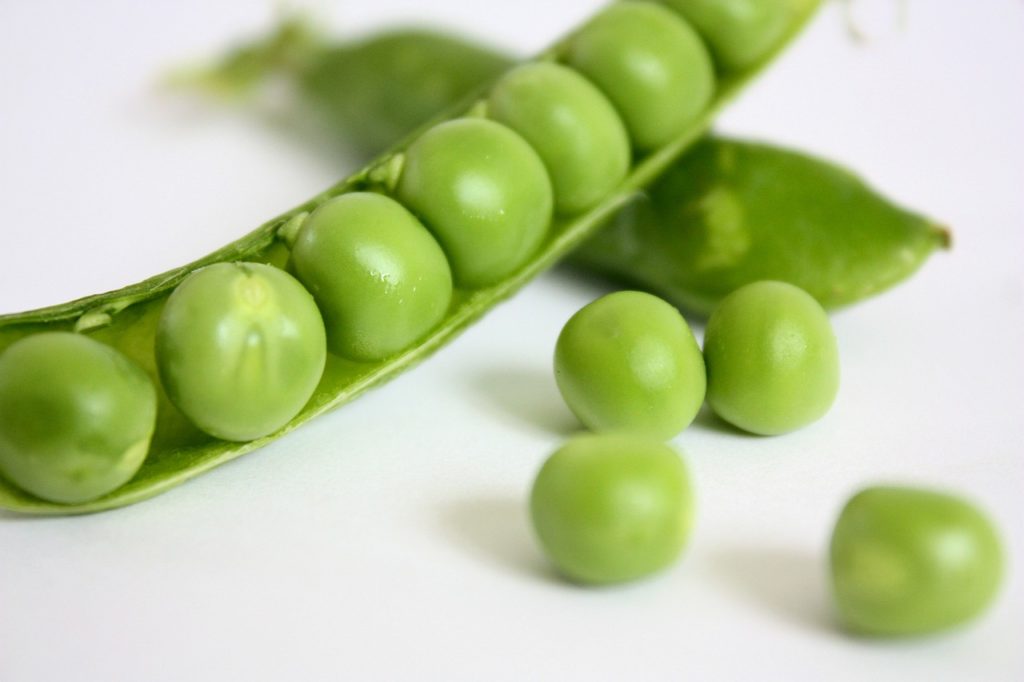
It’s enough to make Popeye do a spit take: Regardless of their wimpy track record, a cup of green peas includes 8 times the protein of a cup of spinach. And with practically 100 percent of your day-to-day value of vitamin C in a single cup, they’ll help keep your immune system up to snuff. Layer them into a Mason jar salad or add them to an omelet to boost eggs’ satisfying power.
8. Bell peppers
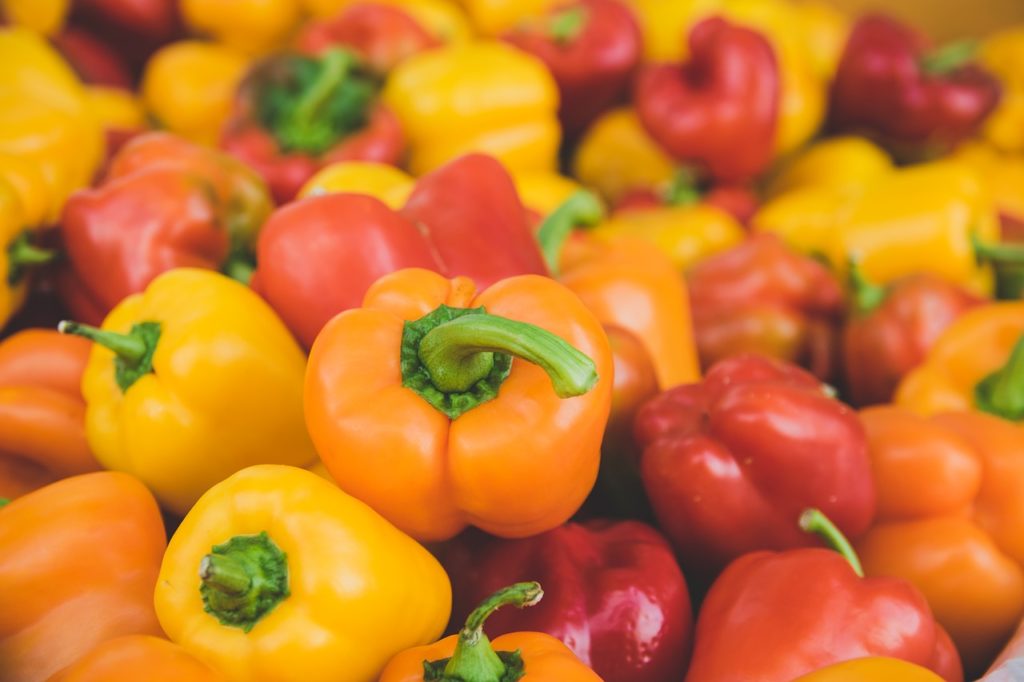
You may have heard that spicy hot peppers can assist you burn calories, but did you know that moderate peppers can have the very same result? Thanks to a metabolism-boosting compound, dihydrocapsiate, and their high vitamin-C material, sweet red and green peppers can help you lose weight. A cup of these bell-shaped veggies dishes out to three times the day’s advised vitamin C– a nutrient that neutralizes tension hormones which set off fat storage around the belly.
9. Broccoli

In addition to fending off prostate, breast, lung and skin cancers, this flowery veggie can likewise assist you whittle your middle. According to specialists, broccoli contains a phytonutrient called sulforaphane that increases testosterone and battle body fat storage. It’s also abundant in vitamin C (a simple cup of the stuff can help you hit your daily mark), a nutrient that can lower levels of cortisol during demanding scenarios. The only downside? It can make some people with sensitive stomachs a bit gassy and bloated– which isn’t a great look if you’re planning to hit the beach or rock a tight-fitting outfit. That’s no reason to avoid this vegetable on a daily basis, though. Whip up our parmesan roasted broccoli recipe to reap the belly-flattening advantages– simply maybe not the day before you need to look your leanest.
10. Carrots

Carrots are an exceptional source of vitamin A, vitamin C, vitamin K, potassium, and fiber, and that’s just the suggestion of the dietary iceberg. Beta-carotene – the substance that gives carrots their orange hue– has been connected to a reduced danger for establishing certain types of cancer. Per an American Journal of Clinical Nutrition study of over 3,000 ladies, those who had greater levels of beta-carotene in their blood had a 59 percent lower risk of a particular kind of breast cancer (ER-negative breast cancer) than females with lower levels. Another associated substance also discovered in carrots, alpha-carotene, reduced the cancer threat by about 39 percent.
Another research study published in the journal Nutrition and Cancer recommended beta-carotene might fend off lung cancer. According to scientists, beta-carotene and alpha-carotene are carotenoids that our bodies convert to vitamin A, which is essential for immune function, keeping healthy cells, and triggering carcinogen-metabolizing enzymes.
11. Pickles
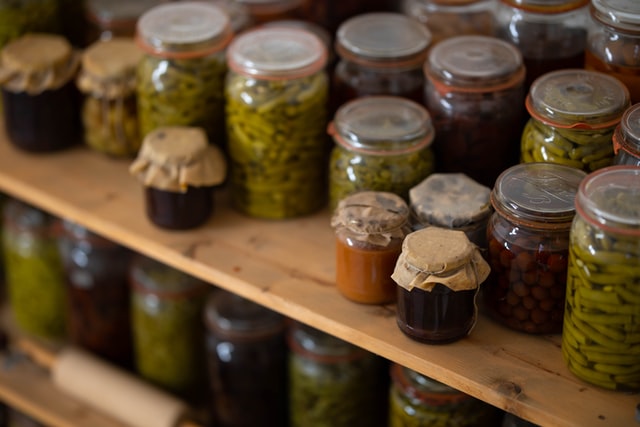
Pickles are low-cal, filled with fiber and covered in vinegar– which is all great news for your waistline. In fact, just one large pickle has 15 calories and 2 grams of belly-filling fiber, so eating three or four can really leave you feeling pretty satiated for less than 100 calories! Every dieter knows that eating filling treats are paramount to weight-loss success, however how does the vinegar assist the fat-fighting trigger? Studies show acidic foods assist increase the rate at which the body burns off carbohydrates by as much as 40 percent– and the faster you burn off carbohydrates, the faster your body starts incinerating fat, which can help you get that lean appearance you long for. Include these tangy, pickled cucumbers to sandwiches and burgers or chomp on them solo to begin feeling more positive in your skivvies.
12. Roasted potatoes
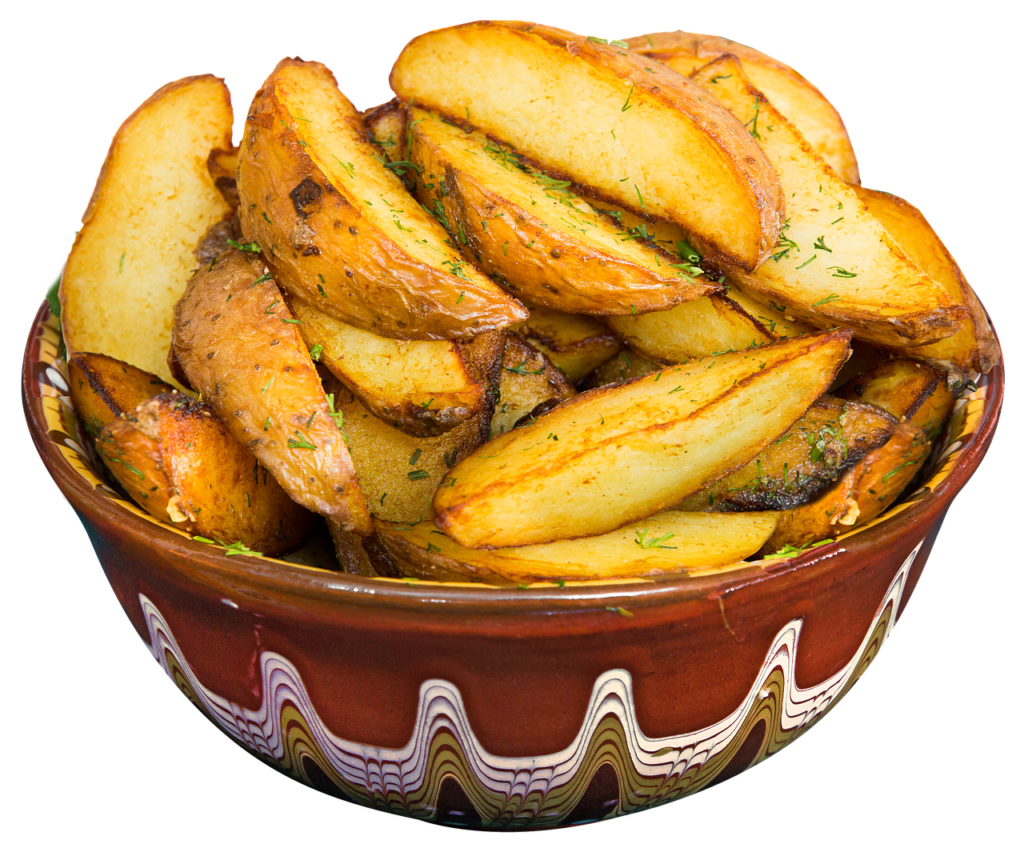
If you usually eat your potatoes warm out of the oven, you’re losing out on the spud’s fat-fighting superpowers. When you throw potatoes in the refrigerator and eat them cold, their absorbable starches become resistant starches through a procedure called retrogradation. As the name suggests, resistant starch, well, resists digestion, which promotes fat oxidation and lowers abdominal fat. Because eating cold baked potatoes doesn’t sound too appealing, why not utilize the cooled spuds to make a potato salad rather? Here’s how: Bake red potatoes in the oven up until they’re prepared through and permit them to totally cool. Cut them into small slices and dress them with Dijon mustard, fresh pepper, chopped green onions (more on this veggie next), dill and plain Greek yogurt. Mix whatever together and put in the fridge to cool in the past consuming.
13 Sweet Potatoes
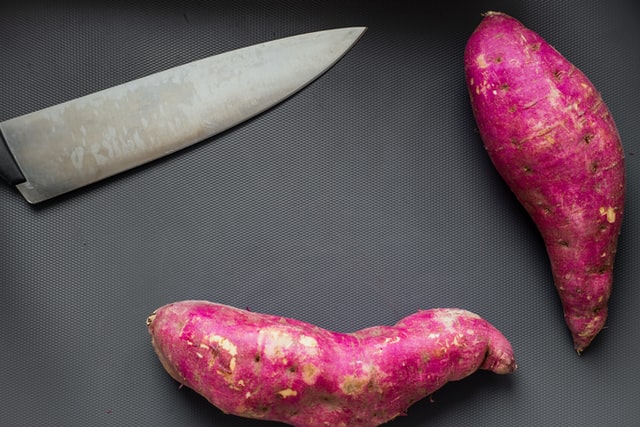
Although potatos offer some potassium and fiber, sweet potatoes in fact reign supreme in the nutrition department. A large sweet potato contains around 4 grams of satiety-boosting protein, 25 percent of the day’s belly-filling fiber, and 11 times the suggested daily consumption of vitamin A, which has actually been revealed to have cancer-fighting residential or commercial properties. A Taiwan-based study in the Asia Pacific Journal of Medical Nutrition discovered that greater intake of vitamin A-rich vegetables, especially garland chrysanthemum and sweet potato leaves, may provide potential defense from lung cancer. All that nutrition and defense for less than 200 calories? Count us in!
14. Onions
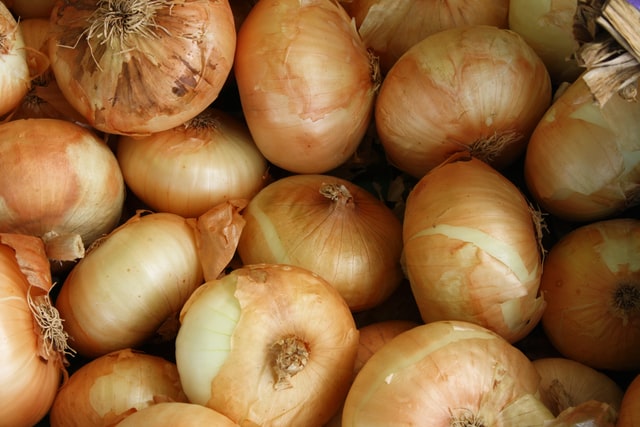
Onions are abundant in quercetin, a flavonoid that increases blood circulation and activates a protein in the body that assists regulate glucose levels, torches stored fat and keeps new fat cells from forming. Not to mention, onions are essentially the unsung hero of cardiovascular health– an essential location of health for everyone, however specifically those who hit the health club hard to accelerate their weight-loss efforts. The cooking staple can help lower cholesterol, fend off hardening of the arteries and assist maintain healthy blood pressure levels. The very best part? Onions are very low-cal and easy to toss into practically anything, from soups, homemade hamburgers, sandwiches and tacos to pastas, salads, veggie sides, rice and omelets.
15. Spaghetti Squash
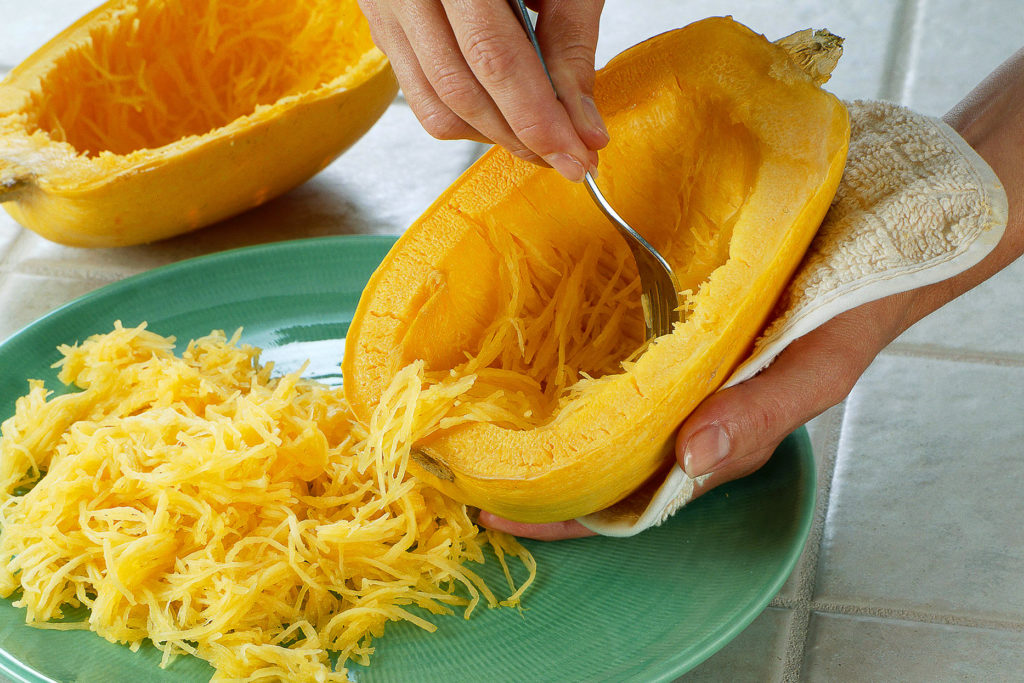
The typical American consumes approximately 15.5 pounds of pasta each year – and most of it is the refined white stuff. Sadly, this type of noodle is generally devoid of fiber and micronutrients. Spaghetti squash, on the other hand, boasts only about 40 calories per cup – more than 75 percent less calories than a cup of plain pasta – and is an exceptional source of vitamin A and potassium, which will keep your muscles toned and strong. The gourd also contains cancer-fighting beta carotene, and double the amount of omega-3 fats found in butternut squash.
16 Mushrooms

Fungis is considered natural food all-stars due to the fact that they are an excellent source of potassium, which is essential for muscle health and recovery and can likewise decrease blood pressure and reduce the impacts of a high-sodium meal. In addition to being low-cal and fat-free, research study has actually revealed consuming fungis can result in increased resistance and safeguard against cancer. One study printed in the journal 3Biotech that compared the effects of mushroom extract on mice found that those treated with the extract experienced decreases in prostate tumor size and tumor cell expansion compared to the control group of mice that were not treated.
17. Asparagus with lemon
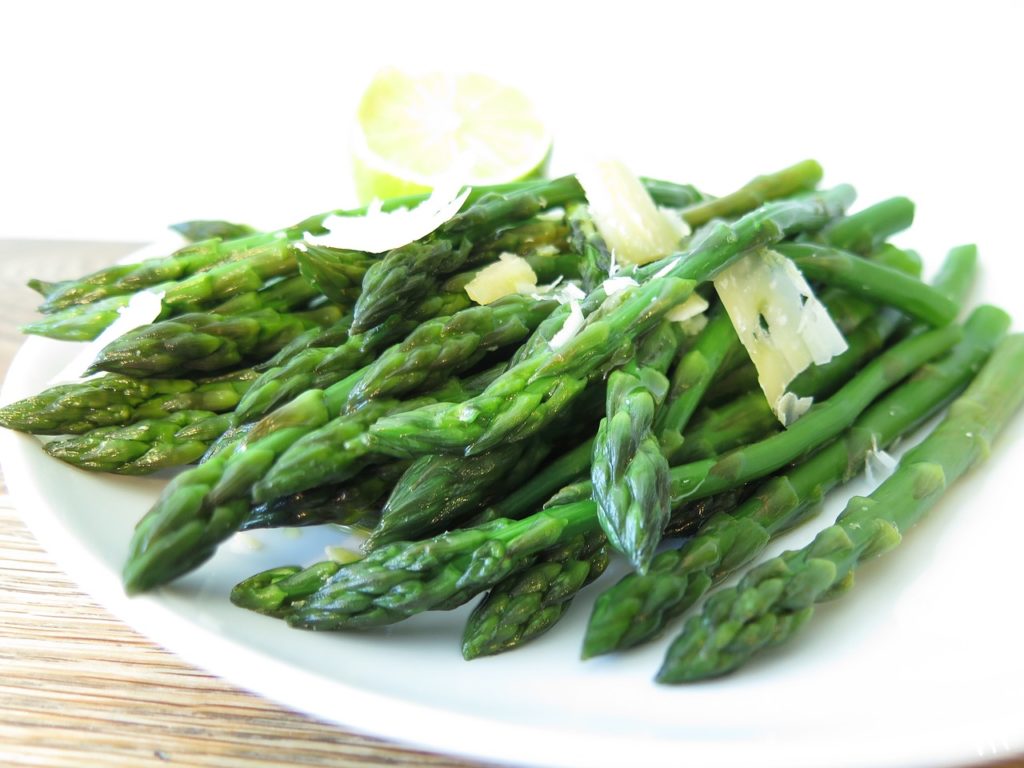
It’s a natural diuretic, so asparagus, which contains less than 5 grams of sugar per serving, can assist relieve bloating and other unpleasant feelings. The green vegetable’s balance of amino acids and minerals may also help to alleviate hangover symptoms, according to a research study in the Journal of Food Science.
18. Beets
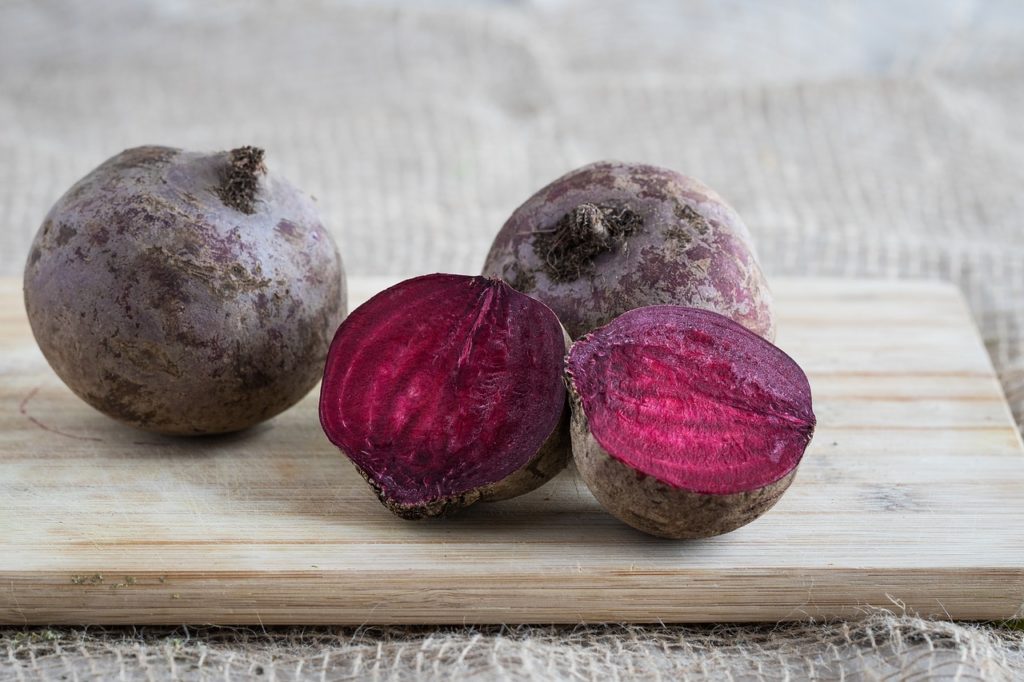
These ruby-red roots include a type of antioxidant called betalains that help repair work and regenerate cells in the liver, your body’s primary detox organ. Beets are likewise high in immune-boosting vitamin C, fiber, and necessary minerals like potassium, which enables healthy nerve and muscle function, and manganese, which is good for your bones, liver, kidneys, and pancreas. What’s more? Beets likewise consist of nitrates which, according to a research study in The Journal of Nutrition, decreases blood pressure and assists those with chronic kidney disease.
19. Celery

According to a 2014 research study released in the journal Obesity, chewing till your food is lump-less increases the number of calories the body burns throughout food digestion: about 10 additional calories in a 300-calorie meal, meaning that just by slowing down the rate at which you chew, you could possibly burn roughly 2,000 additional calories each month. The research study also found that chewing food more thoroughly increases blood flow to the stomach and gut, which might help to improve food digestion and absorption of more nutrients from your food. Considering celery has actually long been admired as one of the chewiest veggies around, making it virtually calorie-free, it’s worthwhile to include some in your diet plan. Attempt tossing the hydrating veggie into a tomato or chicken soup for an added crunch that will easily decrease the total calorie count of your meal. Aside from being very chewy, celery is likewise low-carb and reasonably high in fiber– simply one cup of the sliced veggie has 1.6 grams of the satiating nutrient.
20. Eggplant
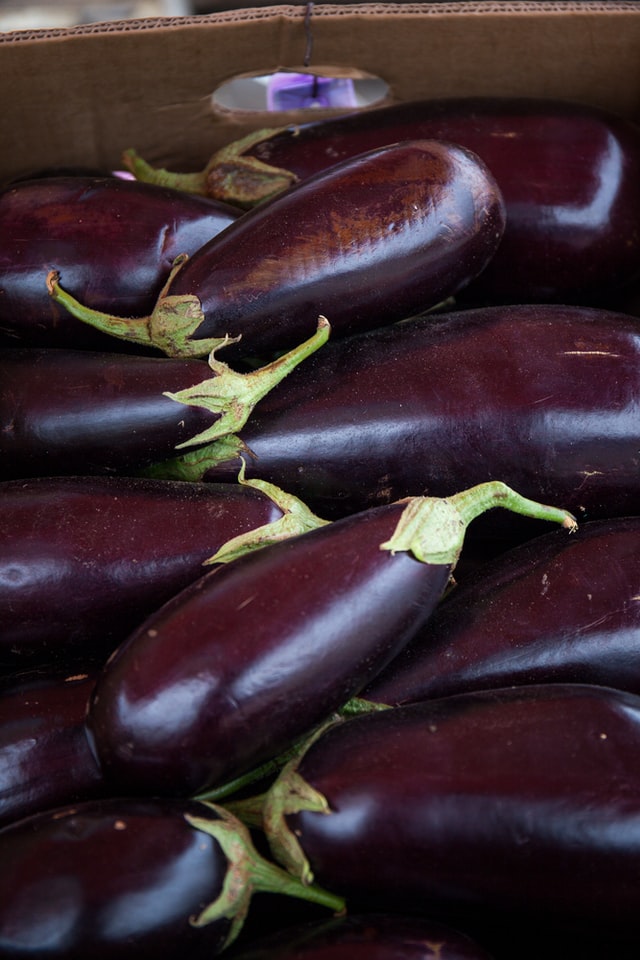
According to a review published in the journal Molecular Nutrition & Food Research study anthocyanins, flavonoids that offer eggplants their distinct color, will offer you with a range of excellent benefits. Said advantages include however are not limited to weight problems control, diabetes control, cardiovascular disease prevention, and enhancement of visual and brain functions such as a sharper short-term memory and lowered swelling. Go ahead and toss some of this delicious vegetable into a stir-fry or make some babaganoush– an eggplant-based spread with fewer calories than hummus.
21 Spirulina
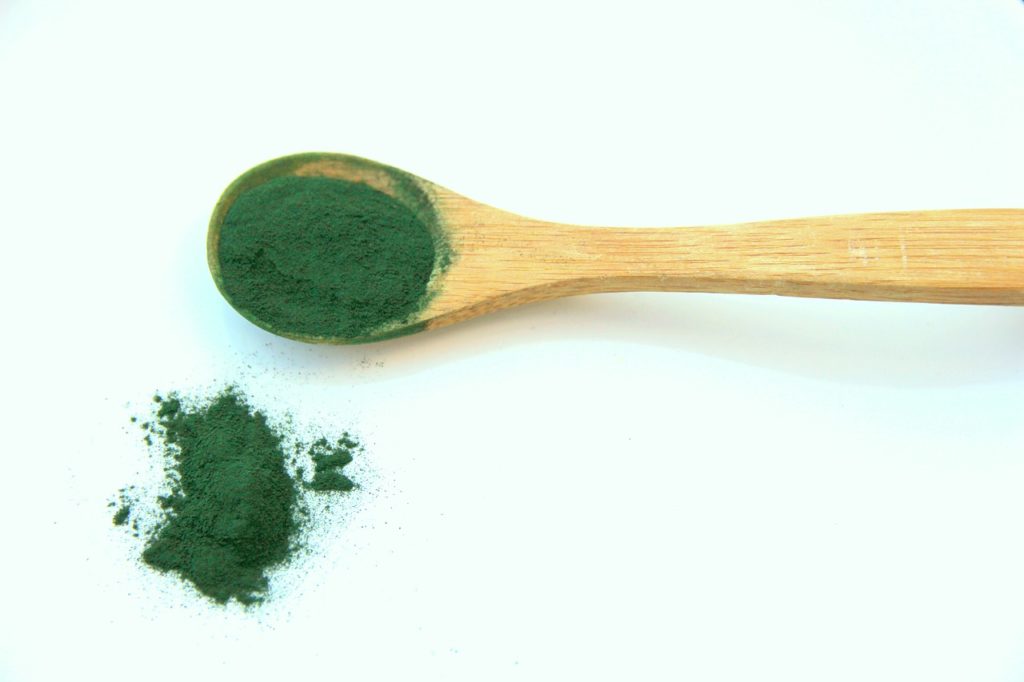
Spirulina is a high-protein seaweed supplement that’s generally dried and sold in powdered form. The dried things is about 60 percent protein, and, like quinoa, it’s a complete protein, suggesting it can be converted directly into muscle in the body and is hence a great weight loss tool. A tablespoon of the blue-green algae delivers 8 grams of metabolism-boosting protein for simply 43 calories, plus half a day’s allotment of vitamin B12, which in and of itself can offer you more energy and enhance your metabolic process. Try tossing some spirulina into a healthy smoothie and viewing the pounds melt off.
22. Sauerkraut
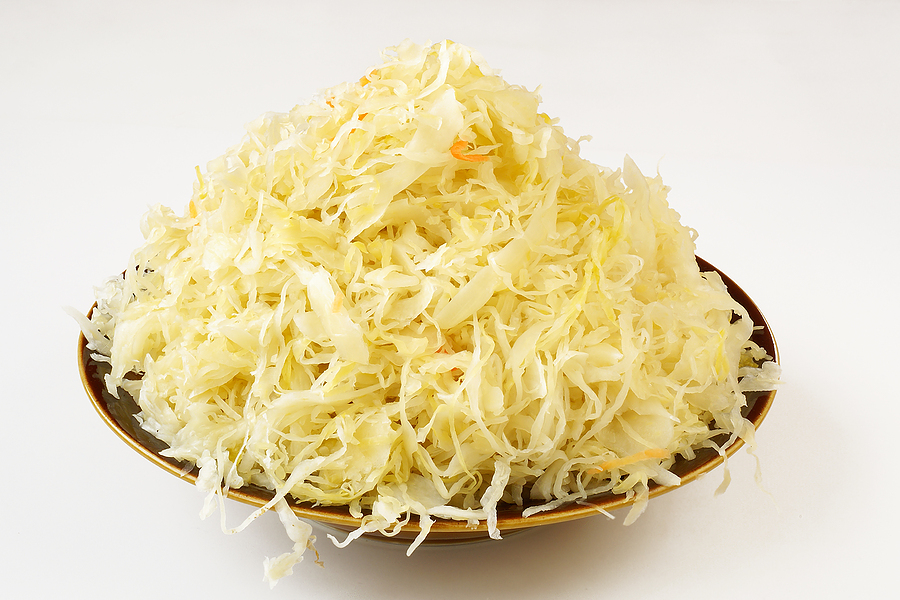
Sauerkraut isn’t just for hot dogs; this lacto-fermented cabbage, which consists of natural substances, might have potent cancer-fighting and belly-slimming residential or commercial properties. When unpasteurized, sauerkraut is abundant in Lactobacillus bacteria – a lot more so than yogurt – which improves the healthy flora in your intestinal tract, bolsters your immune system, and even enhances your total health. A 2013 research study released on the planet Journal of Microbiology and Biotechnology discovered that mice fed a probiotic-rich sauerkraut extract had lowered cholesterol levels.
23. Avocado

Though rather villainized for being high in calories, avocados are more than worthy of a role in your diet. Simply half of an avocado contains 4.6 grams of belly-filling fiber, and the green fruit’s satiating powers are so potent that a study in Nutrition Journal found that folks who added half a fresh avocado to their meal reported a 40 percent decreased desire to consume for hours later. In addition, avocados contain metabolism-enhancing monounsaturated fats that have been revealed to reduce cravings, and unsaturated fats, which seem to prevent the storage of tummy fat. In fact, according to an evaluation that appeared in the journal Phytotherapy Research study, avocados might help combat metabolic syndrome, which is a clustering of danger elements including high blood glucose, cholesterol, blood pressure, and body mass index that might then result in an increased danger of type 2 diabetes and cardiovascular disease.
24. Black Sapote
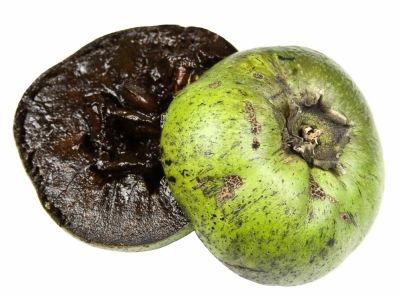
Called the “chocolate pudding fruit,” black sapote tastes like … chocolate pudding. No surprise it’s a Consume This, Not That! favorite! Stealthily abundant and creamy, a 100-gram serving has 130 calories and 191 mg of vitamin C, or twice that of an orange. (That’s a mic drop, chocolate pudding.) A study released in the Food Research study International discovered black sapote to be an excellent source of carotenoids and catechins, which spur the release of fat from fat cells and assists the liver convert fat into energy.
How to Enjoy It: Originating in South America, black sapotes can be discovered in Florida and Hawaii, and certain growers online will deliver them within the U.S. Fans swear by them for low-cal pies and smoothies.
25. Ruby Red Grapefruit

A 2012 study printed in the journal Metabolic process discovered the eating half a grapefruit before meals might help in reducing visceral (tummy) fat and lower cholesterol levels. Individuals of the six-week research study who ate grapefruit with every meal saw their waists diminish by approximately an inch! Scientists attribute the effects to a combination of phytochemicals and vitamin C in the grapefruit. Think about having half of a grapefruit prior to your morning oatmeal, and slicing a couple of segments to a starter salad.
26. Sour Cherries
Sour cherries have actually been shown to benefit heart health in addition to body weight, in a study on obese rats. A 12-week study by the University of Michigan researchers found that rats fed antioxidant-rich sour cherries showed a 9 percent belly fat decrease compared to rats fed a “Western diet plan.” Moreover, the researchers noted that the cherry consumption had extensive capability to change the expression of fat genes. Enjoy some in addition to these best breakfast foods for weight-loss.
27. Berries
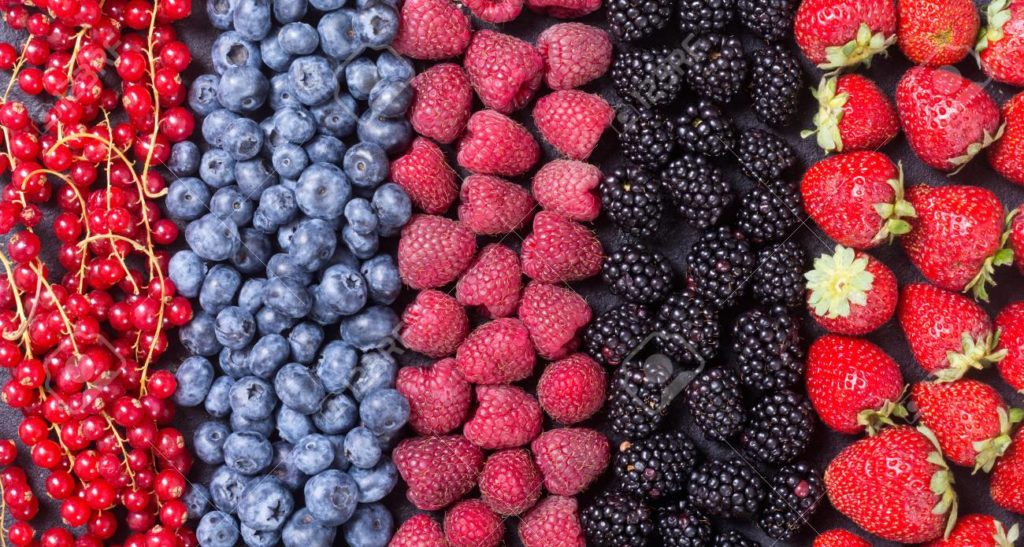
Berries – raspberries, strawberries, blueberries – are loaded with polyphenols, effective natural chemicals that can assist you slim down – and even stop fat from forming! In a current Texas Woman’s University research study, researchers discovered that feeding mice three daily servings of berries reduced the development of fat cells by as much as 73 percent!
28. Açai Berries
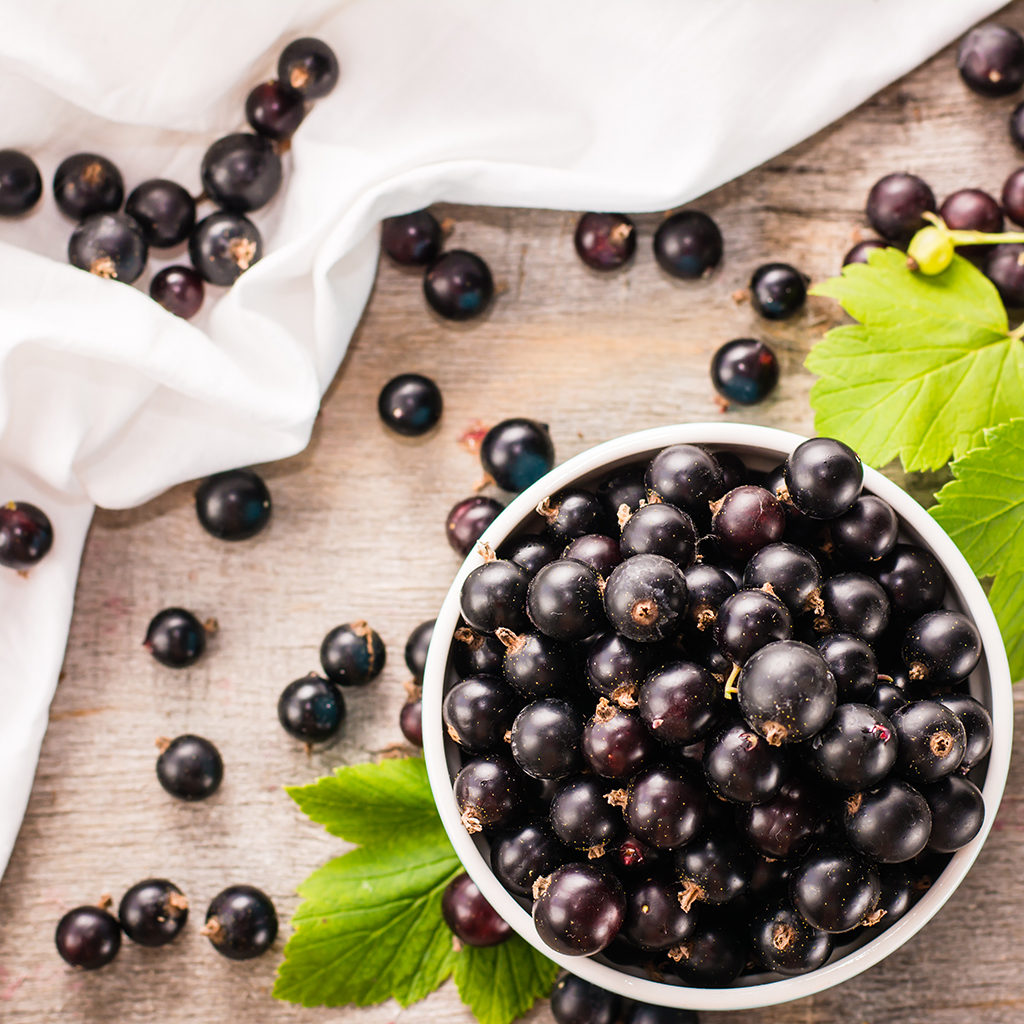
Açai berries are such super stars, they are worthy of an entry all to themselves. Required evidence? A research study in the Journal of Agricultural and Food Chemistry found that the black-purple berries include higher levels of antioxidants than pomegranates and blueberries. And a University of Florida research study found that an açai extract set off a self-destruction action in as much as 86 percent of the leukemia cells it came in contact with – an appealing finding for researchers working to treat cancer.
29. Kiwi
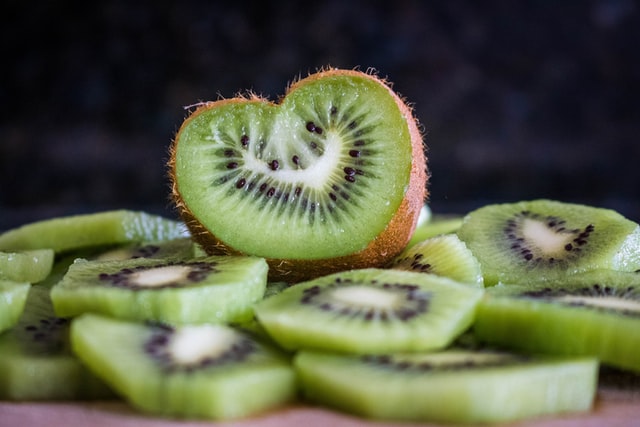
Backed up and puffed up? Snack on kiwi. The green fruit can help you get in great shape thanks to its capability to help food digestion. Little, kiwifruit consists of a significant amount of actinidin, a natural enzyme that helps help with food digestion by breaking down protein in the body. The tropical fruit also includes prebiotic fiber, which primes the gut for healthy food digestion. According to a 2015 study released in a Nutrition Research study, a day-to-day serving of green kiwifruit helps increase bowel movements.
30. Apples
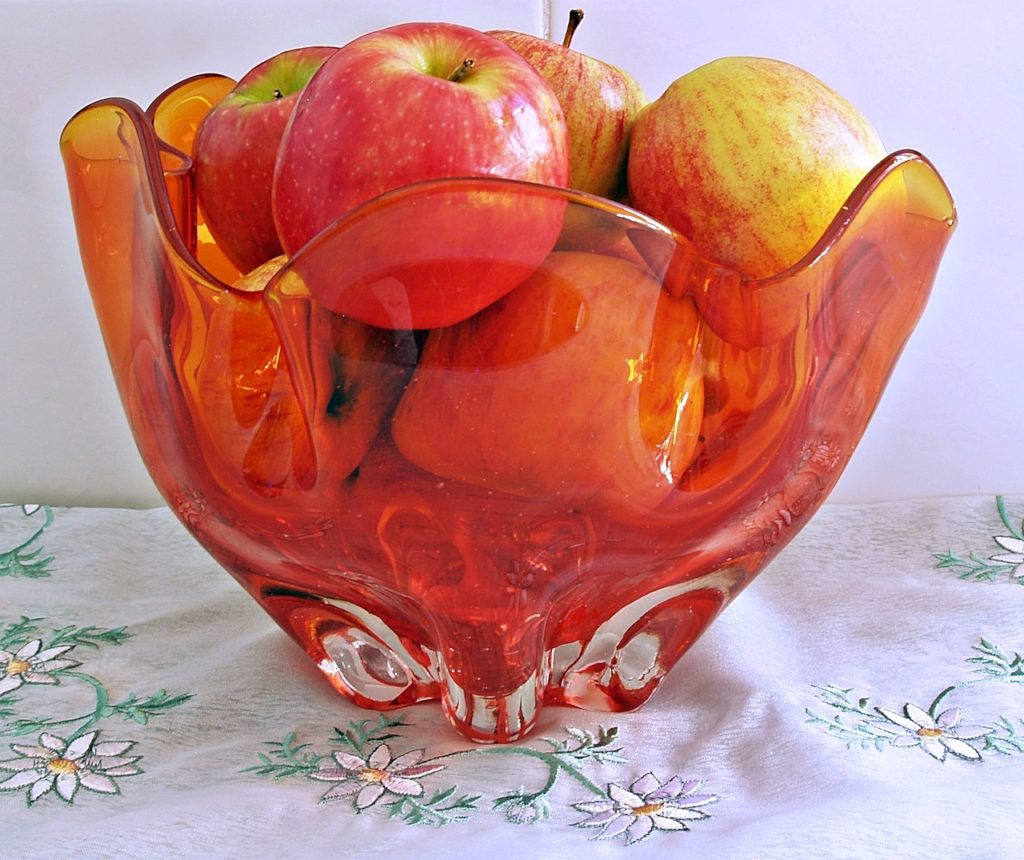
Apples are an excellent fruit source of fiber, which research studies have shown to be important to reducing visceral fat. A current study at Wake Forest Baptist Medical Center found that for each 10-gram increase in soluble fiber eaten daily, visceral fat was lowered by 3.7 percent over 5 years. A study performed by University of Western Australia researchers discovered that the Pink Woman range had the highest level of antioxidant flavonoids.
31. Watermelon
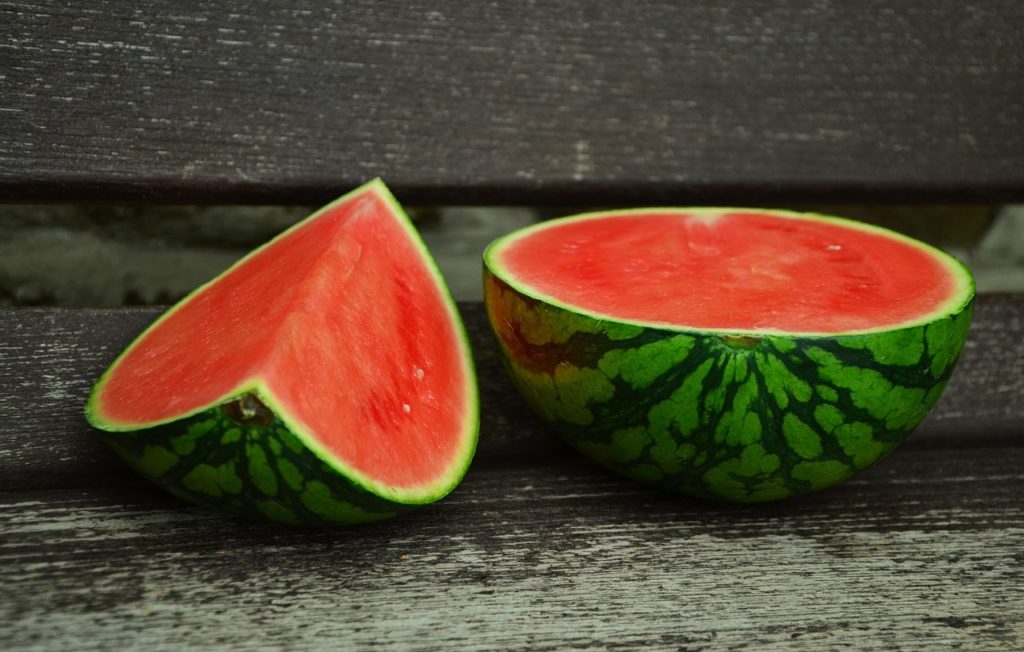
Watermelon sometimes gets a bum rap for being high in sugar, but the fruit has some impressive health benefits. Consuming watermelon may improve lipid profiles and lower fat build-up, according to University of Kentucky researchers. Even better, a study of professional athletes by the Universidad Politécnica de Cartagena in Spain found watermelon juice to help in reducing the level of muscle pain. And staying hydrated with foods like watermelon is just among the ways to consume your water.
32. Grapes
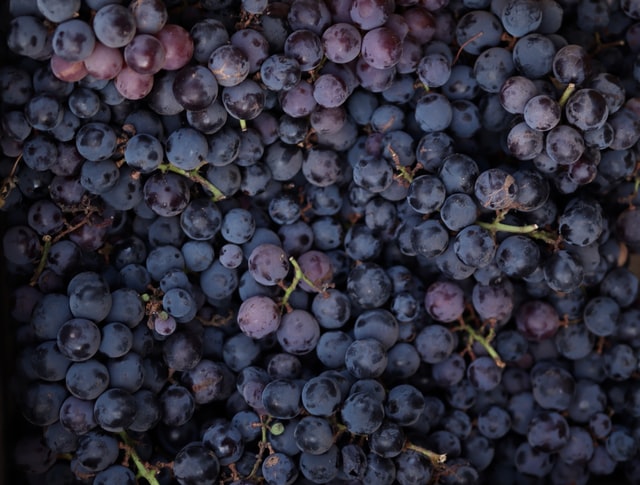
Grapes are another fruit that’s typically neglected because of their high sugar material, but don’t let that prevent you from snacking on a handful of these babies every once in a while. That’s since both grapes and grape juice are rich sources of resveratrol, a phytochemical well studied for anti-cancer effects. Research study suggests polyphenols in general, and resveratrol in particular, possess potent antioxidant and anti-inflammatory properties, and in laboratory studies resveratrol prevented the type of damage understood to set off the cancer process in cell, tissue, and animal models. According to the Memorial Sloan Kettering Cancer Center, resveratrol was found to prevent proliferation of cancer cells through apoptosis and by exerting anti-estrogenic impacts, and reductions in breast cancer cell migration and intrusion were observed after resveratrol supplementation.
33. Bananas
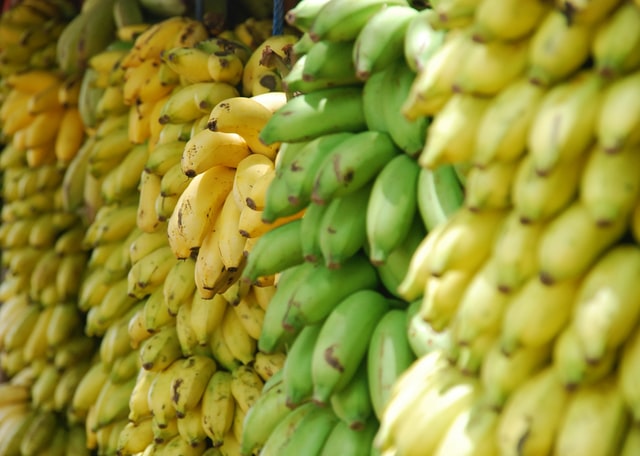
The modest fruit – botanically, actually a berry! – is maybe the least-heralded grocery store staple. Its powers are proven, and to examine just how impactful they can be, Consume This, Not That! Consulted our group of nutritional experts to figure out exactly what eating one banana does to your body.
34. Pomegranates
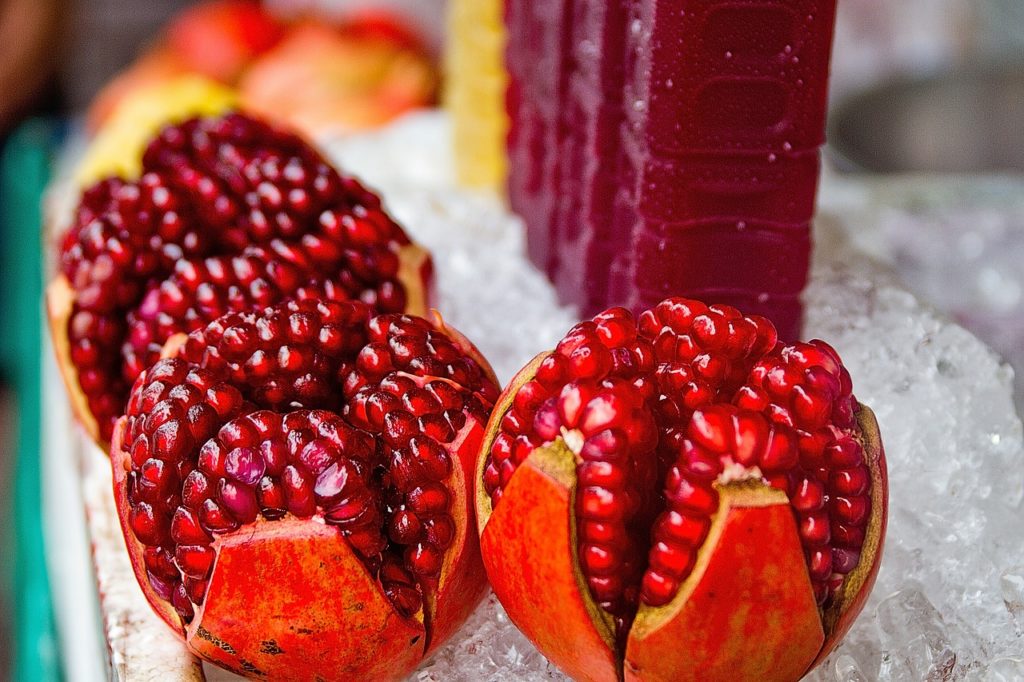
Not just are pomegranates loaded with protein and belly-filling fiber (which is found in the fruit’s edible seeds) however they likewise consist of anthocyanins, tannins, and high levels of anti-oxidants, which research published in the International Journal of Obesity states can assist combat weight gain. Toss some pomegranate seeds onto a salad for a burst of flavor, or blend them into a smoothie to increase the drink’s nutrient content.
35 Lemons

In addition to smelling nice and looking quite, lemon can likewise help encourage weight reduction. Just one of the intense citrus fruits consists of a whole day’s worth of vitamin C, a nutrient that has the power to reduce levels of a tension hormone called cortisol that activates appetite and fat storage. In addition, lemons also contain polyphenols, which researchers say may ward off fat accumulation and weight gain. Think it or not, even the peel is helpful since it is a potent source of pectin – a soluble fiber that’s been proven to assist people feel fuller, longer. According to a research study published in the Journal of the American College of Nutrition, participants who ate just 5 grams of pectin experienced more satiety.
36. Oranges
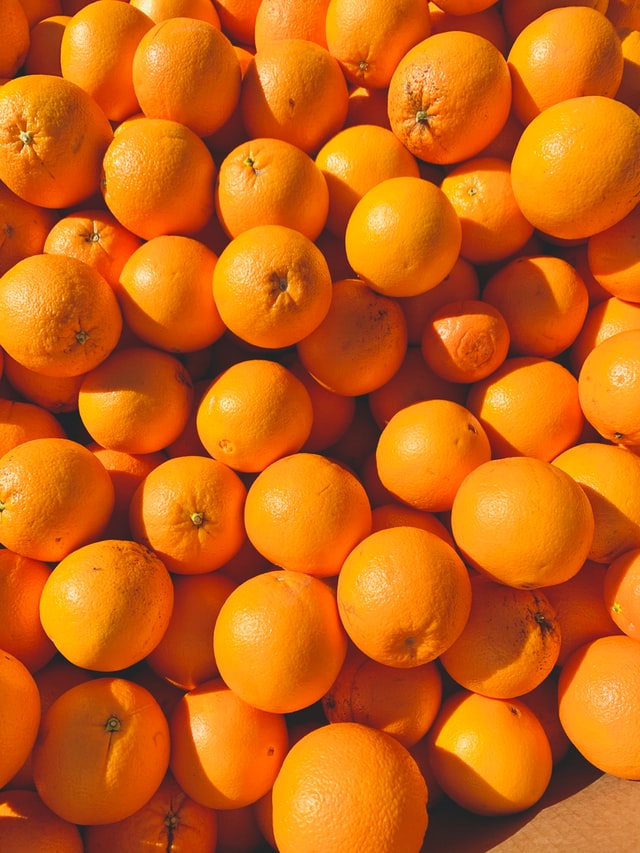
Like their yellow relatives, oranges are chock-full of vitamin C- simply among the delicious fruits supplies an incredible 130 percent of your vitamin C needs for the day. What sets oranges apart from lemons is their obvious capability to lower ladies’s stroke danger. According to research reported in Stroke: Journal of the American Heart Association in 2012, eating higher amounts of a flavonoid called flavanone (which is abundant in oranges and grapefruits) might decrease one’s chances of having an ischemic stroke. The study discovered that ladies who consumed high quantities of flavanone had a 19 percent lower danger of ischemic stroke than women who consumed the least amount.
A Cup of Tea
For most Americans, tea is tea. However, in places like Japan, the UK, and big swaths of Southeast Asia, tea leaves are as varied and nuanced as wine grapes. Not just does the flavor profile modification considerably between one tea variety and the next, but so do the health benefits. Not just can specific brews combat numerous illness, select teas have actually also been shown to rev the metabolic process, stop hunger, slash waist-widening tension and shrink fat cells. When Taiwanese researchers studied more than 1,100 people over a 10-year duration, they figured out that those who drank tea had almost 20 percent less body fat than those who consumed none!
To ensure you brew the best cups for your weight reduction objectives, we’ve assembled the most potent waist-whittling teas from around the globe.
37 Green Tea
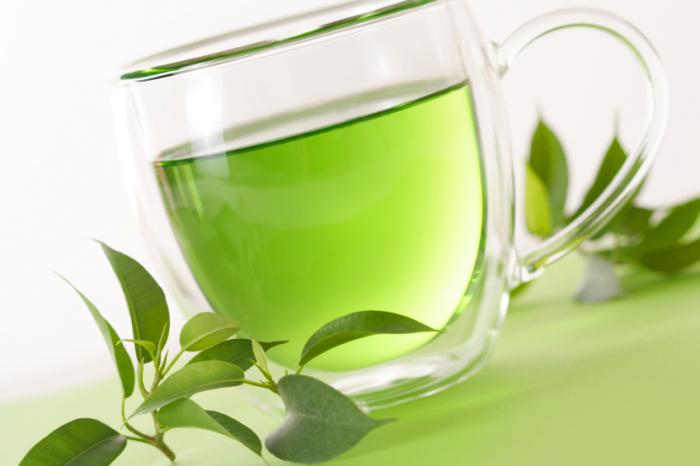
Get this: Green tea actually blasts away flab! Scientists associate the fat-burning properties of green tea to catechins, specifically EGCG – the name of a group of antioxidative substances that blast adipose tissue by revving the metabolism, increasing the release of fat from fat cells (especially in the stubborn belly), and then accelerating the liver’s fat loss capability. It improves: Research study suggests that combining routine green-tea drinking with workout might maximize the weight loss advantages. A study in The Journal of Nutrition discovered that participants who integrated an everyday routine of 4-5 cups of green tea with a 25-minute workout lost 2 more pounds than the non-tea-drinking exercisers.
38. White Tea

Usually speaking, tea is an exceptional no-sugar alternative to sickeningly sweet sodas and juices, and, as you will soon learn, each range of tea features its own weight-loss benefits. For example, a research study in the journal Nutrition & metabolic process discovered white tea can simultaneously promote the breakdown of fat in the body while obstructing the development of brand-new fat cells– a belly-blasting double whammy!
39. Black Tea
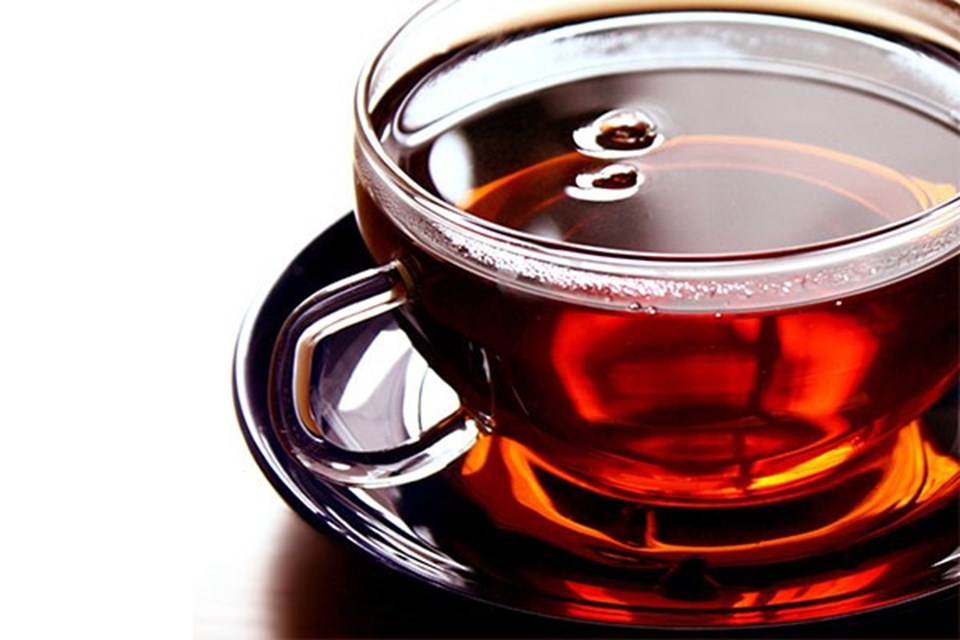
Italian scientists found that consuming a cup of black tea daily improves cardiovascular function – and the more cups you drink, the more you benefit! Better cardiovascular function means you can breeze through that 5K you signed up for. And a study released in the Proceedings of the National Academy of Sciences exposed that drinking 20 ounces of black tea daily triggers the body to produce 5 times more interferon, a crucial element of your body’s infection-protection toolbox.
40. Red Tea
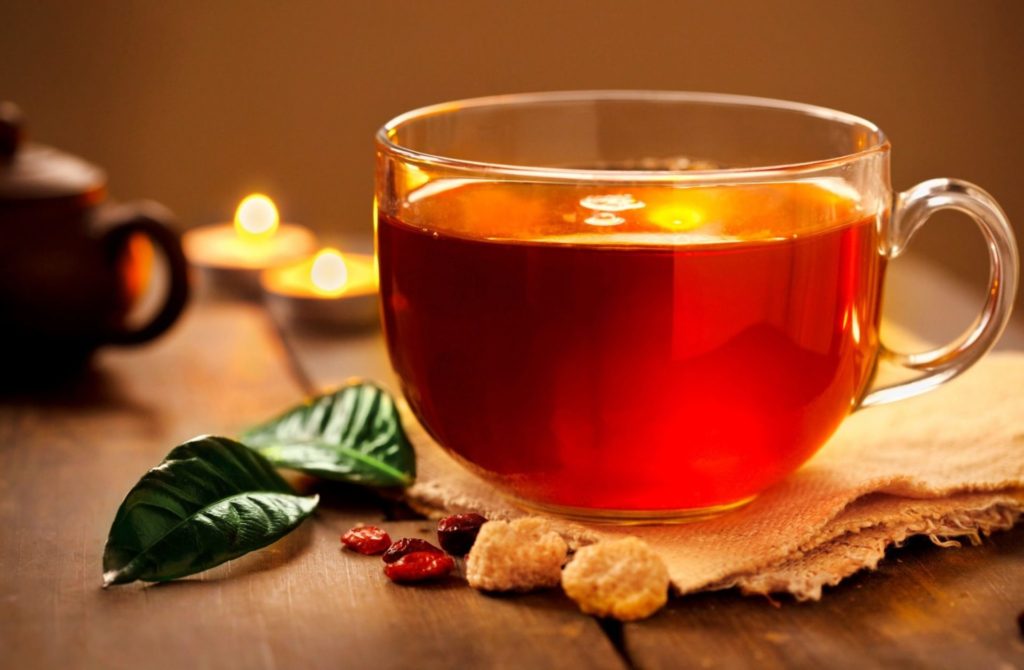
Rooibos tea is made from the leaves of the “red bush” plant, grown solely in the small Cederberg region of South Africa, near Cape Town. What makes rooibos tea especially helpful for your belly is a distinct and powerful flavonoid called Aspalathin. According to South African researchers, polyphenols and flavonoids found in the plant inhibit adipogenesis – the formation of new fat cells – by as much as 22 percent. The chemicals also help aid the fat metabolic process. Plus, Rooibos is naturally sweet, so you will not need to sugarcoat. It’s also not technically a tea– it’s a natural infusion.
41. Pu-erh Tea
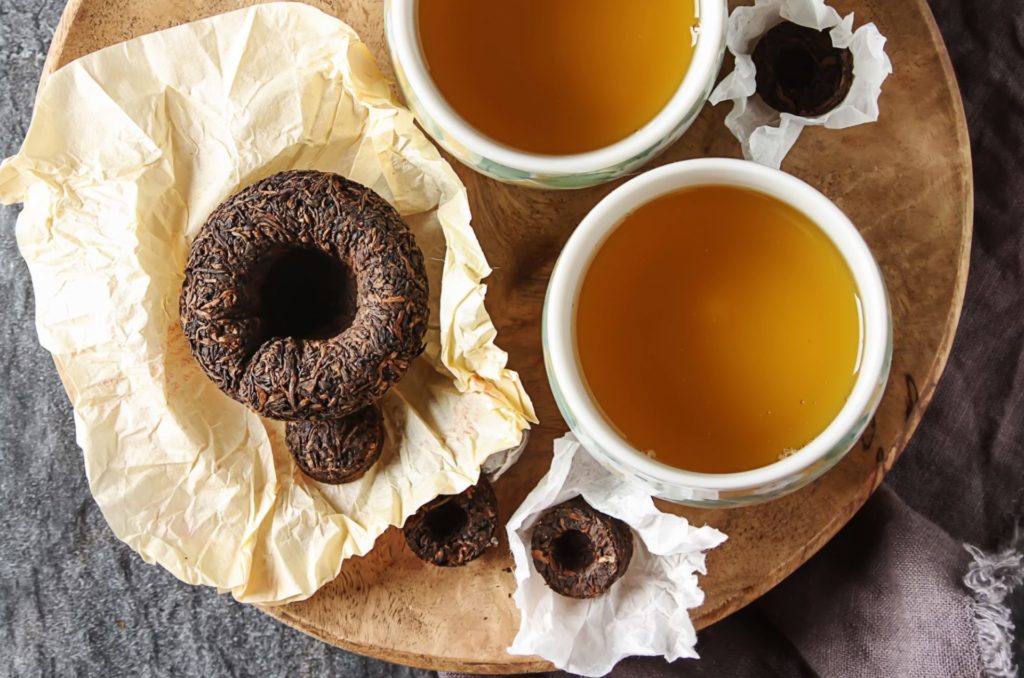
Another star of the 7-Day Flat-Belly Tea Cleanse, this fermented Chinese tea can literally shrink the size of your fat cells! To find the brew’s fat-crusading powers Chinese researchers divided rats into five groups and fed them differing diet plans over a two month duration. In addition to a control group, there was a group offered a high-fat diet without any tea supplementation and three extra groups that were fed a high-fat diet with varying dosages of pu-erh tea extract. The researchers found that the tea substantially decreased triglyceride concentrations (possibly harmful fat discovered in the blood) and belly fat in the high-fat diet groups.
42. Oolong Tea
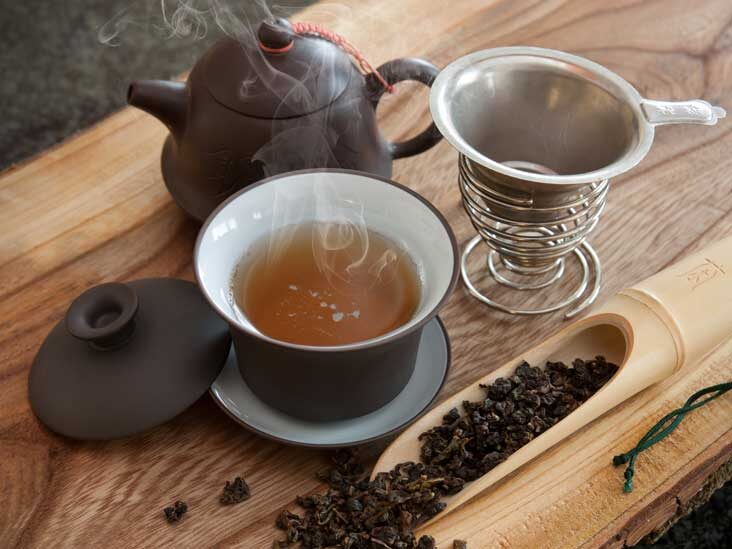
Not to be outshined, oolong tea – a Chinese beverage – can help those who drink it shed approximately a pound weekly. According to a 2009 study in the Chinese Journal of Integrative Medication, individuals who frequently drank oolong tea lost six pounds over the course of six weeks. What’s more? The tea’s anti-oxidants are believed to remove damaging complimentary radicals and improve bone health.
43. Kombucha
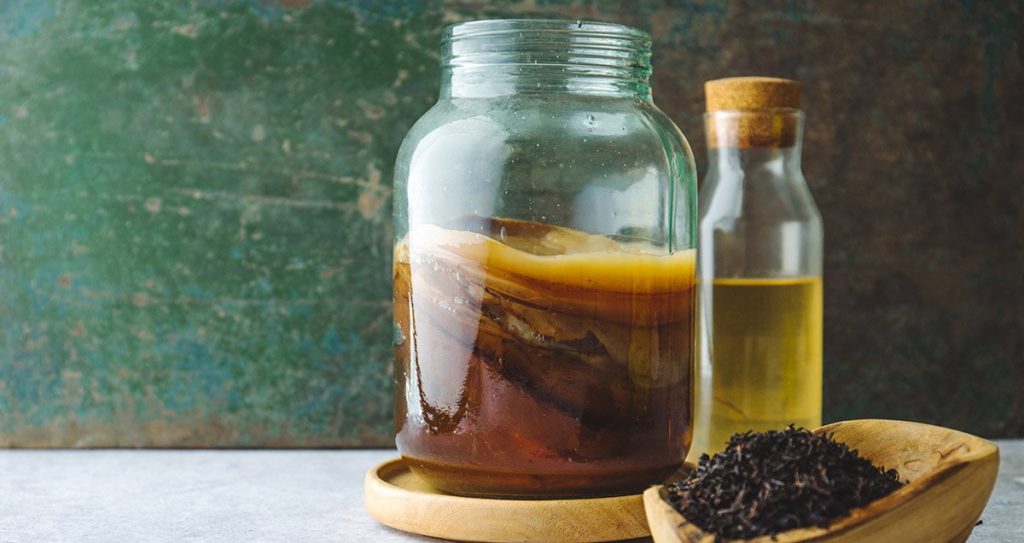
Kombucha is a somewhat effervescent fermented drink made with black or green tea and a cooperative culture of bacteria and yeast, called a SCOBY. This fermented tea is filled with gut-healthy probiotics which can help balance excellent gut bacteria and help improve your body immune system. In fact, researchers at Cornell University found that the stylish drink may promote resistance on account of its powerful anti-microbial residential or commercial properties, which can eradicate pathogenic germs. What’s more? Kombucha still has the healthy residential or commercial properties of tea, including superstar antioxidants.
Red Meat & Pork
The chicken breast is the gold requirement of healthy barbecuing that can aid weight loss – low fat, high protein – the secret to any successful eating strategy is range, and research indicates that you now have options. While you still want to steer away from conventional grocery store ground chuck, there are ways to enjoy a beef hamburger understanding you’re doing right by your midsection. And you can open your grill to more creative options, too – all loaded with nutrients and protein that’ll keep your physical fitness objectives on track without compromising flavor.
44. Grass-Fed Beef
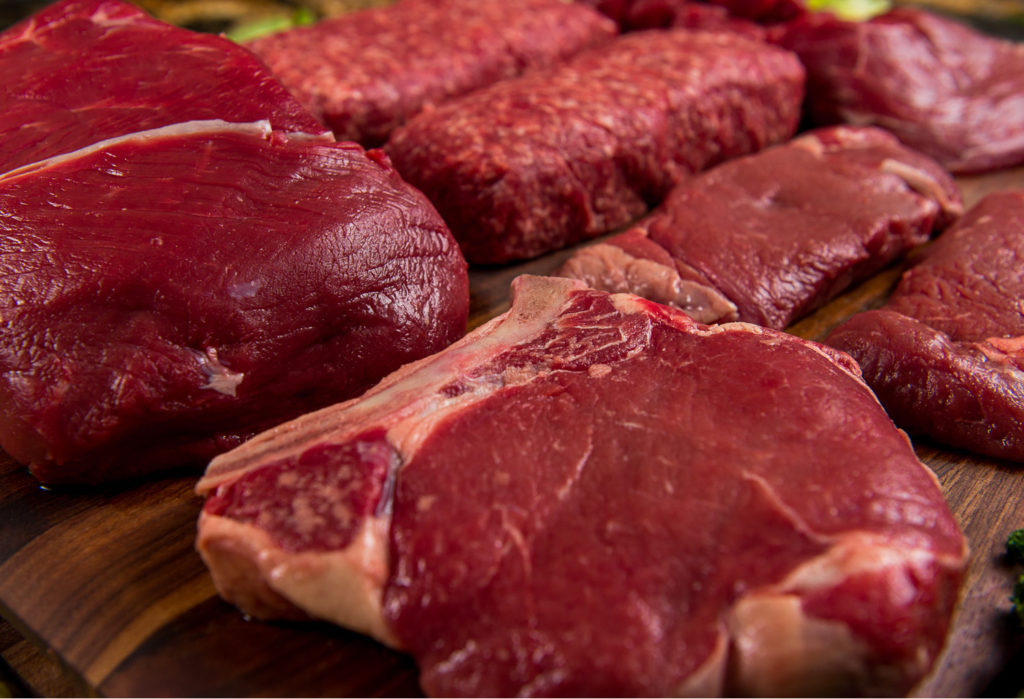
When it concerns steak or hamburgers, go grass-fed. It might ding your wallet, but it’ll damage your abs. Grass-fed beef is naturally leaner and has fewer calories than traditional meat: A lean seven-ounce traditional strip steak has 386 calories and 16 grams of fat. But a seven-ounce grass-fed strip steak has just 234 calories and five grams of fat. Grass-fed meat also contains greater levels of omega-3 fatty acids, according to a research study published in Nutrition Journal, which have been shown to decrease the danger of heart disease.
45. Bison meat
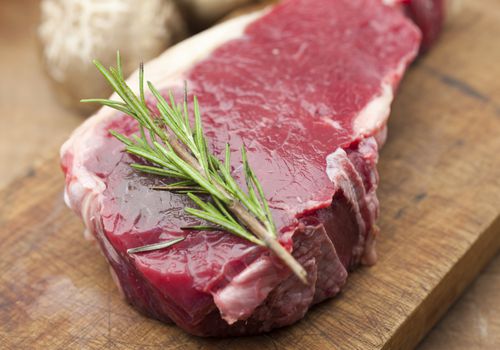
While grass-fed beef is an exceptional choice, bison’s profile has been increasing in recent years, and for good factor: It has half the fat of and fewer calories than red meat. According to the USDA, while a 90%- lean hamburger might average 10 grams of fat, a comparatively sized buffalo hamburger rings in at 2 grams of fat with 24 grams of protein, making it among the leanest meats around. Wait, taking a possibility on this unanticipated meat will make you two healthy rewards: In simply one serving you’ll get a full day’s allowance of vitamin B-12, which has been shown to boost energy and help shut down the genes responsible for insulin resistance and the formation of fat cells; additionally, because bison are naturally grass-fed, you can with confidence down your hamburger understanding it’s totally free of the hormones and contaminants than can manifest themselves in your stubborn belly fat.
46. Ostrich meat
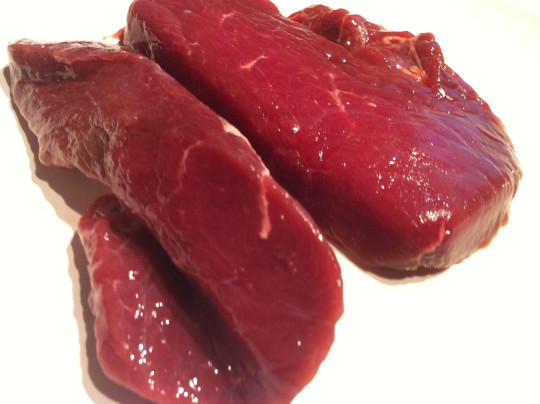
Lower that eyebrow you’re raising. Ostrich meat is the rising star of the grill. While it’s technically red and has the rich taste of beef, it has less fat than turkey or chicken. A four-ounce patty contains nearly 30 grams of the bodybuilding nutrient and simply six grams of fat. Plus, one serving has 200% of the day-to-day recommended allowance of vitamin B-12. This unique meat can also help whittle your middle: Ostrich consists of 55 milligrams of choline, among these essential nutrients for fat loss. And it’s not as tough to find as it sounds– ostrich is increasingly offered in grocery stores around the nation.
47. Bone Broth

While bone broth may not be for everybody, it’s tough to deny the warm beverage’s various health benefits. The broth is made when animal bones (typically beef or chicken) are left to simmer in water for an extended amount of time, which breaks down their collagen and other nutrients. Some of that broken down product from the cartilage and tendons is glucosamine (which you may have seen offered as a supplement for arthritis and joint pain). According to a study released in the journal PLOS One, when obese, middle-aged grownups took a glucosamine supplement, they had the ability to decrease serum CRP (swelling biomarker) levels by 23 percent more than those who didn’t take a supplement. The stock is also filled with anti-inflammatory amino acids (glycine and proline), and the sufficient levels of gelatin will help rebuild your gut lining to more assist with your anti-inflammatory gut microorganisms. Simply put, drink up!
48. Pork tenderloin
A long time enemy of physicians and dieters, pork has been coming around as a healthier option of late – as long as you pick the right cut. Your best choice is pork tenderloin: A University of Wisconsin research study discovered that a three-ounce serving of pork tenderloin has slightly less fat than a skinless chicken breast. It has 24 grams of protein per serving and 83 milligrams of waist-whittling choline (in the latter case, about the like a medium egg). In a research study published in the journal Nutrients, researchers asked 144 obese people to consume a diet rich in fresh lean pork. After 3 months, the group saw a significant decrease in waist size, BMI and belly fat, with no decrease in muscle mass! They hypothesize that the amino acid profile of pork protein might contribute to higher fat loss.
Seafood
Salmon lox toast
Regularly eating seafood as part of a healthy diet can do wonders for your weight reduction goals – so long as you pick the best kind. That’s where the waters get dirty again. We had our research team here at Eat This, Not That! Dive into the science behind your seafood. Let’s see if we can’t clear things up with this list of the best fish for losing weight.
49. Halibut
You already understood fish was rich in protein but you might be amazed to find out that halibut tops fiber-rich oatmeal and vegetables in the satiety department. The Satiety Index of Common Foods ranks it the second most filling food– bested only by boiled potatoes for its fullness aspect. Study authors associate the filling factor of white fish like halibut to its impressive protein material and impact on serotonin, among the crucial hormones responsible for cravings signals.
50. Wild Salmon
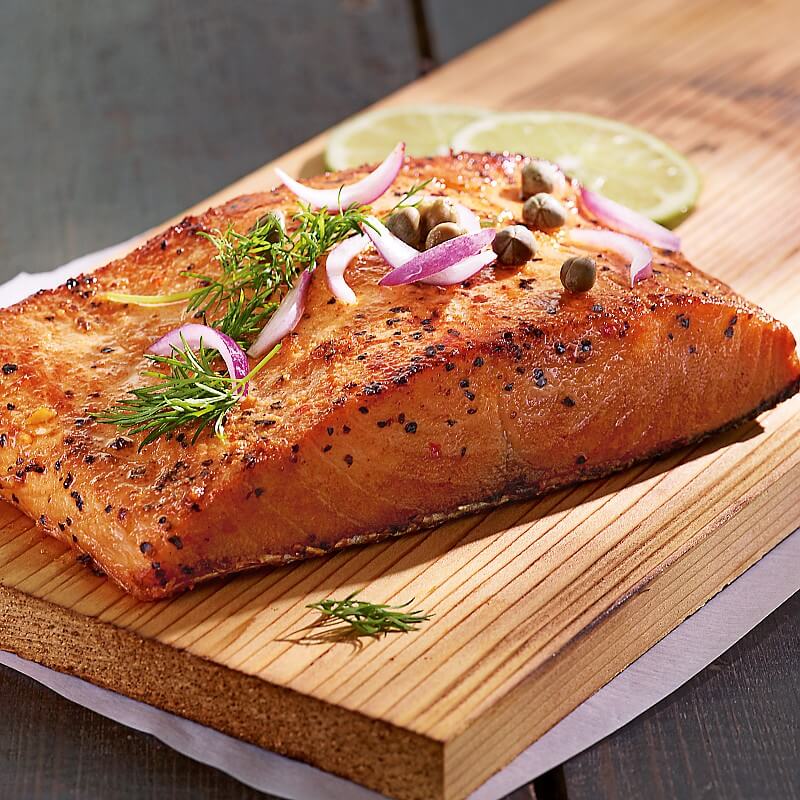
Don’t let salmon’s reasonably high calorie and fat content fool you; research studies suggest the oily fish might be one of the very best for weight reduction. In one study, individuals were divided into groups and appointed one of three equi-caloric weight-loss diets that included no seafood (the control group), lean white fish, or salmon. Everybody lost weight, but the salmon eaters had the lowest fasting insulin levels and a significant reduction in swelling. It’s likely due to salmon’s high levels of anti-inflammatory omega-3 fats.
51. Light Canned Tuna
As a primo source of protein and docosahexaenoic acid (DHA), canned light tuna is among the best and most economical fish for weight loss, especially from your tummy! One study in the Journal of Lipid Research study revealed that omega 3 fatty acid supplementation had the extensive ability to turn off abdominal fat genes. And while you’ll find two types of fatty acids in cold water fish and fish oils– DHA and eicosapentaenoic acid (EPA) – scientists say DHA can be 40 to 70 percent more reliable than EPA at down-regulating fat genes in the abdominal area, preventing stubborn belly fat cells from expanding in size. Canned piece light tuna, collected from the tiniest fish, is thought about a “low mercury fish” and can be enjoyed two to three times a week (or as much as 12 ounces), according to the FDA’s most recent standards.
52. Pacific Cod – Baked cod
Fish and chips will not help you drop weight, a minimum of not out of the fryer. But research study suggests a regular serving of Pacific cod, the fish that’s typical of fish sticks, might keep you stick thin. One study in the journal Nutrition, Metabolic process & Cardiovascular Diseases discovered that eating 5 portions of cod per week as part of a low-calorie diet plan for 8 weeks resulted in an additional 3.8 pounds of weight reduction compared to a diet plan with the same quantity of calories but no fish. Researchers attribute the satiating and slendering residential or commercial properties to cod’s high protein content and amino acid profile, which can assist regulate the metabolism. No wonder Captain Birdseye looks so smug!
53. Oysters
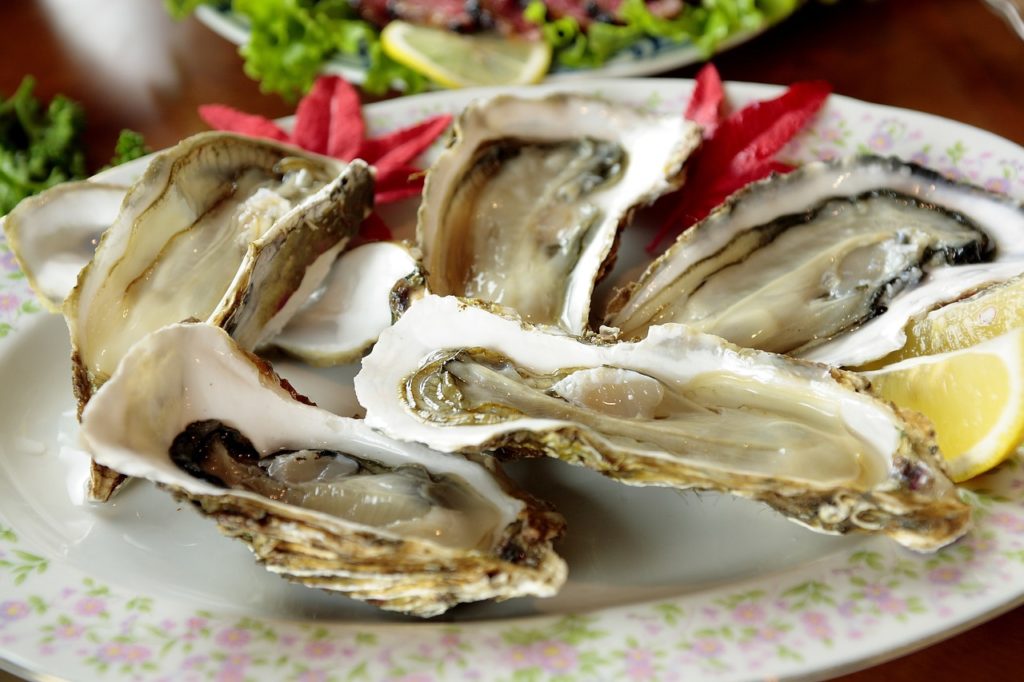
Mentioning weight loss oysters have actually likewise been shown to contribute to assist you shed pounds thanks to their excellent zinc material. One research study discovered that overweight people who consumed 30 milligrams of zinc each day – the equivalent of simply 6 raw oysters– had lower BMIs, weighed less, and showed improvements in blood cholesterol levels. What’s more? That exact same six-oyster assisting will offer you 28 g of protein and 2,064 mg of omega-3s.
54. Canned Sardines In Oil
Sardines
The smaller sized the fish, the smaller sized the amount of damaging mercury. These small fish typically come from the Pacific. Regardless of their small size, they pack a nutritional punch. A simple 3 ounces supplies 12 percent your suggested everyday intake of vitamin D, 835 mg of omega-3s, and 64 percent of selenium, a mineral that plays a key role in the metabolic process, resistance, and reproductive health. Plus, they’re loaded with bone-building calcium. Canned versions are understood to be high in sodium, so make certain to consume them in small amounts or try to find low-sodium canned variations.
Poultry & Eggs
Although there are numerous sources of protein available, ranging from beans and veggies to fish and beef, chicken is without a doubt among the most popular sources – and it’s simple to see why: it’s economical, simple to prepare and reduce in fat than lots of other types of meat. You do not want to miss out on all the other good-for-you poultry sources!
55. Turkey breast
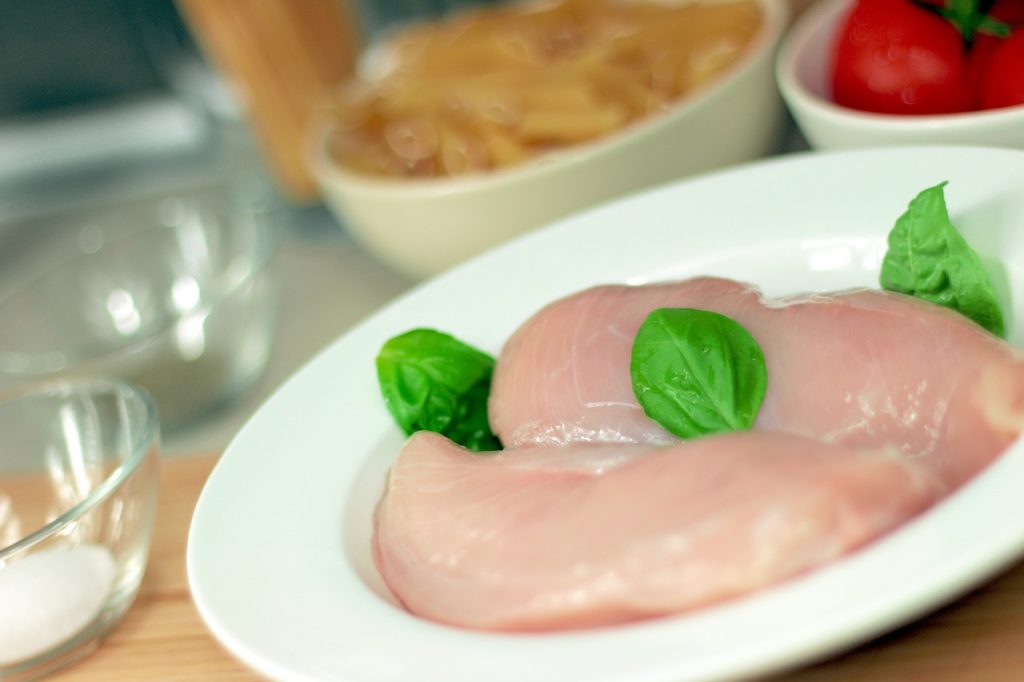
Lean and protein-rich, turkey is no longer an automatic alternative to red meat – this bird deserves props by itself. A quarter-pound turkey burger patty contains 140 calories, 16 grams of protein and eight grams of fat. Furthermore, turkey is rich in DHA omega-3 acids – 18 mg per serving, the greatest on this list – which has been shown to boost brain function, enhance your mood and switch off fat genes, preventing fat cells from growing in size. Simply ensure you purchase breast meat just; dark includes excessive fat. And know that you’re doing your health a double strong by barbecuing at home: Restaurant variations can be packed with fatty add-ins to increase flavor. Not your problem, because it’s going straight from the grill to your plate (ideally with the best spices to burn fat and peppers mixed in).
56. Chicken breast
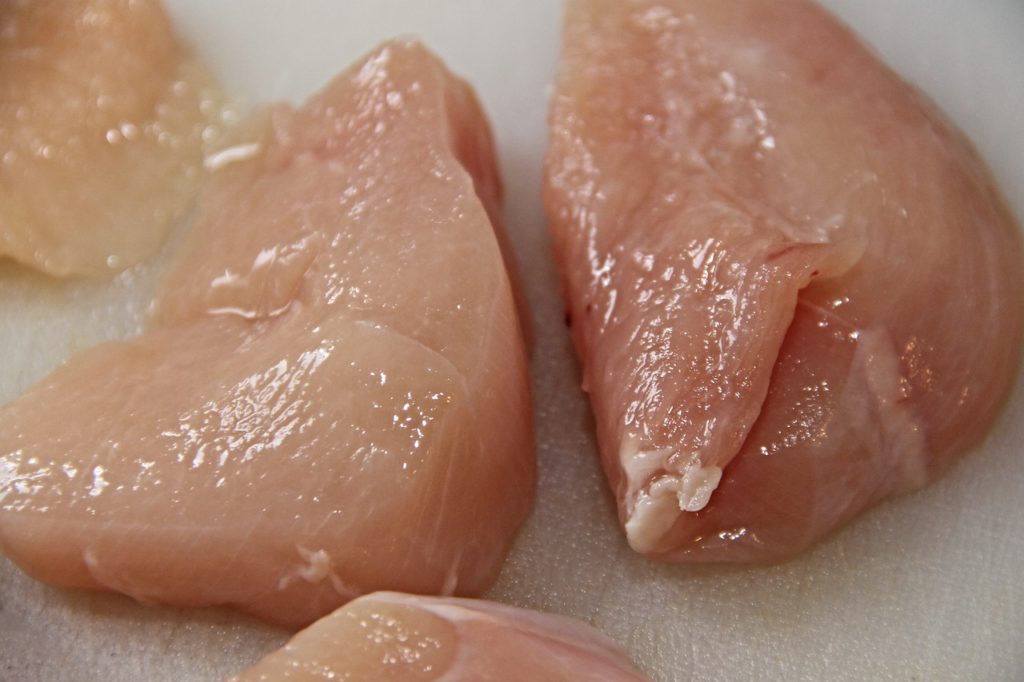
A 3 oz. prepared chicken breast includes just 142 calories and 3 grams of fat, however packs a tremendous 26 grams of protein– majority of the day’s recommended allowance. However the go-to protein can be a stop working on the taste front. (Our casual poll on the taste of plain breast elicited answers varying from “air you cut with a knife” to “damp sock.”) Fortunately: With just a little creativity, you can make it a tasty post-gym dinner or an excellent date-night meal.
57. Eggs

Eggs might simply be the simplest, least expensive and most flexible method to up your protein intake. Beyond easily upping your day-to-day protein count, each 85-calorie eggs loads a solid 7 grams of the muscle-builder! Eggs likewise increase your health: They’re filled with amino acids, anti-oxidants and iron. Do not simply reach for the whites, though; the yolks boast a fat-fighting nutrient called choline, so opting for whole eggs can really help you trim down. When you’re purchasing eggs, focus on the labels. You ought to be purchasing natural, when possible. These are accredited by the USDA and are free from antibiotics, vaccines and hormonal agents. When it comes to color, that’s your call. The difference in color just differs based upon the type of chicken– they both have the exact same dietary value, states Molly Morgan, RD, CDN a board-certified sports specialist dietician based in upstate New York.
Legumes & Nuts
From time to time it’s beneficial to replace animal proteins with plant-based sources of the nutrient in your diet– doing so can lower your risk of chronic conditions like cancer, heart disease, diabetes, and weight problems. In one Spanish research study, individuals who ate a calorie-restricted diet that consisted of 4 weekly servings of beans lost more weight than those on a calorie-equivalent diet plan that didn’t consist of beans– most likely due to their belly-filling fiber content. A research study published in the journal Weight problems backs that assumption: The scientists found that consuming 160 grams – or a bit more than a half cup – of legumes led people to feel 31 percent fuller. It doesn’t matter what types of beans you eat (so long as they aren’t re-fried), simply be sure to work them into your diet to profit. Mixing some into a smoothie is simply among the methods to drop weight in 4 seconds!
58. Beans
Beans benefit more than simply your heart. They’re packed with proteins, antioxidants, minerals and vitamins that can benefit your brain and muscles, too. Not to mention, they absorb really slowly, which can help you feel fuller, longer, and fuel weight-loss efforts without triggering feelings of deprivation. Look for user friendly, pre-cooked BPA-free varieties that are available in a pouch or a box. Include them to soups and salads or mix them with brown rice and steamed vegetables to produce a hearty– yet healthy– supper. Big into snacking? Mix black beans with some salsa and corn, and serve with some entire grain crackers (just make certain they are one of our go-to low carb snacks.
59. Soybean Products – Tofu
Vegetarians rejoice! Soy protein, such as tofu or tempeh, might not be as popular as chicken or fish, however it boasts its own set of impressive dietary advantages that include securing lean body mass and minimizing LDL (” bad”) cholesterol. An evaluation published in the journal Nutrients discovered that soy, in addition to reducing bad cholesterol, can likewise enhance cardiovascular health through systems that have absolutely nothing to do with its protein content. Thanks to extra elements– specifically isoflavones, lecithins, saponins, and fiber– various research studies have actually revealed that soy can ease heart disease risk factors such as hypertension, hyperglycemia, swelling, and weight problems beyond cholesterol lowering. A 2016 research study even discovered that the vegetarian-safe food can likewise enhance kidney function among older adults.
60. Lentils
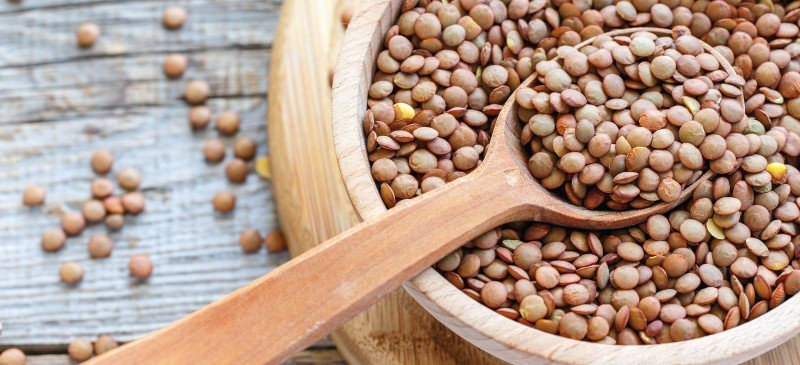
Here are some quite amazing percentages: One cup of lentils has the protein of 3 eggs, with less than one gram of fat! Their high fiber material makes them incredibly satiating, and studies have actually shown that they speed fat loss: Spanish researchers found that people whose diet plans included 4 weekly portions of legumes lost more weight and enhanced their cholesterol more than individuals who didn’t. Consume them by themselves as a side or simmer them into a soup.
61. Peanut Butter

This velvety spread is downright addictive. While consuming excessive peanut butter can damage your waistline, a standard two-tablespoon serving supplies a strong dose of muscle-building protein and healthy fats. According to a 2014 study released in The American Journal of Scientific, Nutrition, consuming peanuts can prevent both cardiovascular and coronary artery illness – the most typical type of heart disease. Look for the saltless, no sugar added varieties without hydrogenated oils to enjoy the most advantages. If you’re tired of plain old PB&J sandwiches, attempt stirring the spread into hot oatmeal, smearing it on fresh produce, or blending it into your post-workout smoothie.
62. Hummus
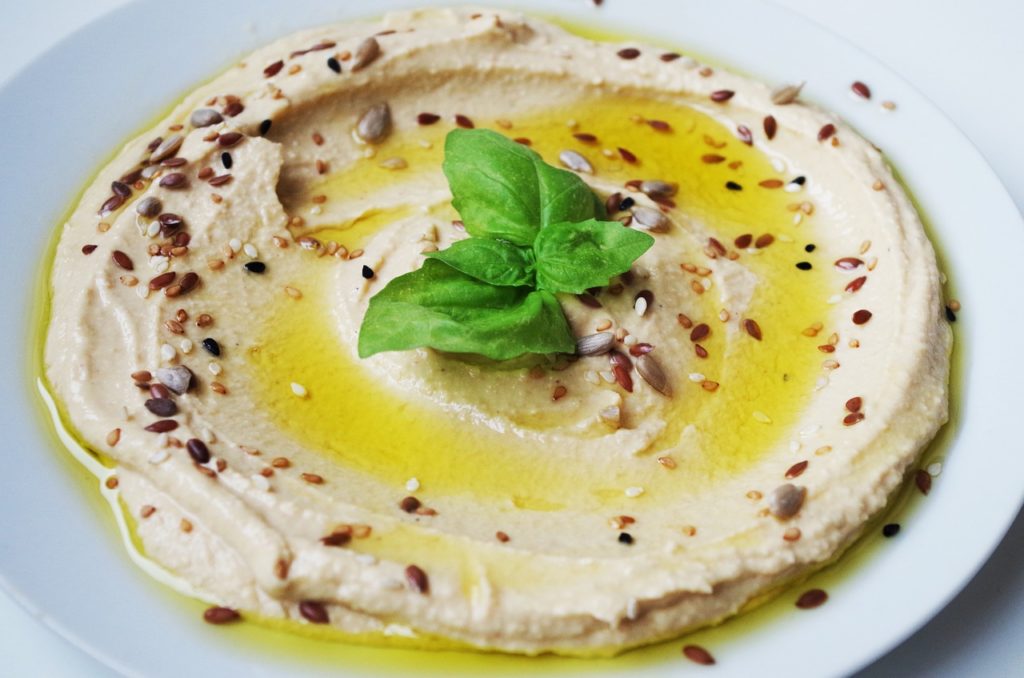
Hummus is made from the magnificent garbanzo bean, also called a chickpea. This satisfying dip is higher in fiber, healthy fats, and protein than your average ranch dip, making it a healthier option for your crudite plate.
GRAINS – Kitchen staples beans, grains
A wise man when stated: “A good credibility is more valuable than money.” And in the food realm, the grain that brings one of the most clout is unquestionably quinoa. Understood for its high protein and fiber material, the ancient grain has actually been stated to aid weight reduction and improve health – and Americans can’t get enough of the stuff. In fact, we imported 69 million pounds of quinoa in 2013 alone. Just since quinoa brings a huge health halo doesn’t necessarily suggest it’s the most nutritious grain in the supermarket. There are a number of grains that load as many– or more– total health and weight loss advantages.
63. Sprouted Whole Grain Bread
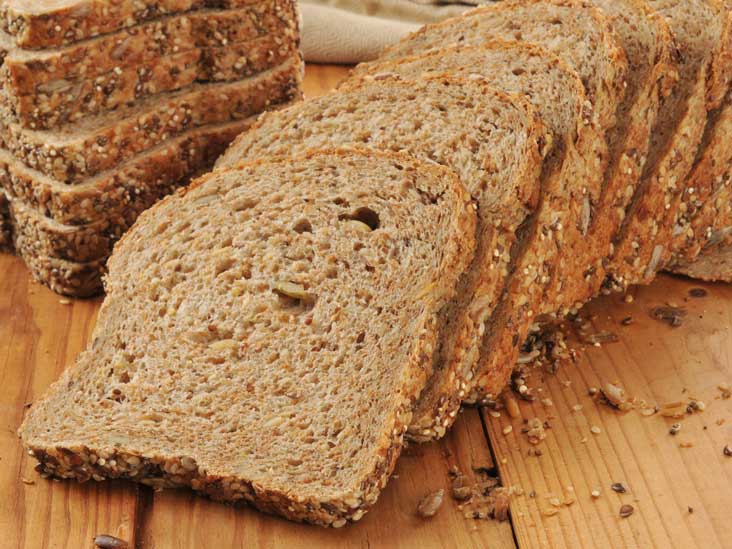
Not all breads are carb bombs waiting to shatter your weight-loss objectives. This nutrient-dense bread is filled with folate-filled lentils, protein, and good-for-you grains and seeds like barley and millet. To improve the flavor of your slices, make a veggie sandwich overflowing with wholesome nutrients. On two slices of sprouted whole-grain bread integrate tahini-free hummus, avocado pieces, roasted red peppers, cucumbers, onions, spinach, and tomatoes, among the healthiest foods on the planet.
64. Teff Grain

This nutty-flavored gluten-free grain might be little, however it packs a magnificent dietary punch. It’s filled with fiber, necessary amino acids, calcium and vitamin C – a nutrient not typically discovered in grains. To profit, trade your morning oatmeal in for a protein-packed teff porridge. Combine a half cup of teff with one a half cups of water and a pinch of salt in a medium pan. Let it come to a boil prior to turning the heat to low and letting it simmer for 15 to 20 minutes. Get rid of from heat and top with apples, cinnamon and a dollop of natural peanut butter.
65. Triticale
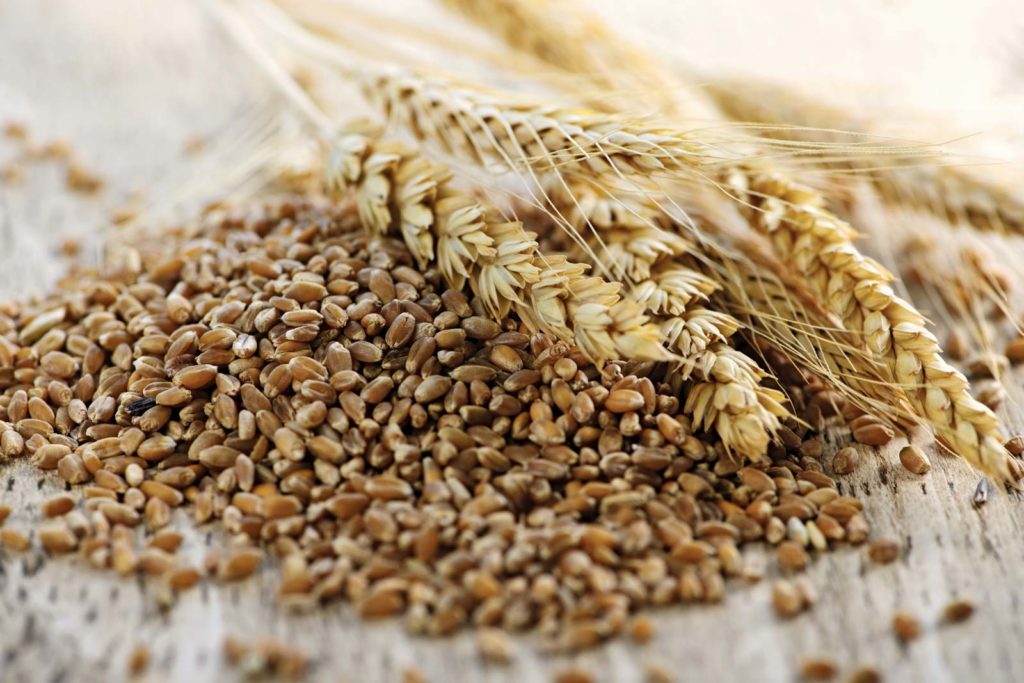
While you might have never become aware of this hearty entire grain before, it may become your new favorite. This wheat-rye hybrid packs 12 grams of protein per half cup, and is likewise rich in brain-boosting iron, bloat-busting potassium, magnesium and heart-healthy fiber. Usage triticale berries in place of rice and blend it with soy sauce, fresh ginger, cloves, shiitake mushrooms and edamame to make a healthy, Asian-inspired dish. If you choose to shooting up the oven to using the range, usage triticale flour in place of traditional flour in your baking.
66. Oats
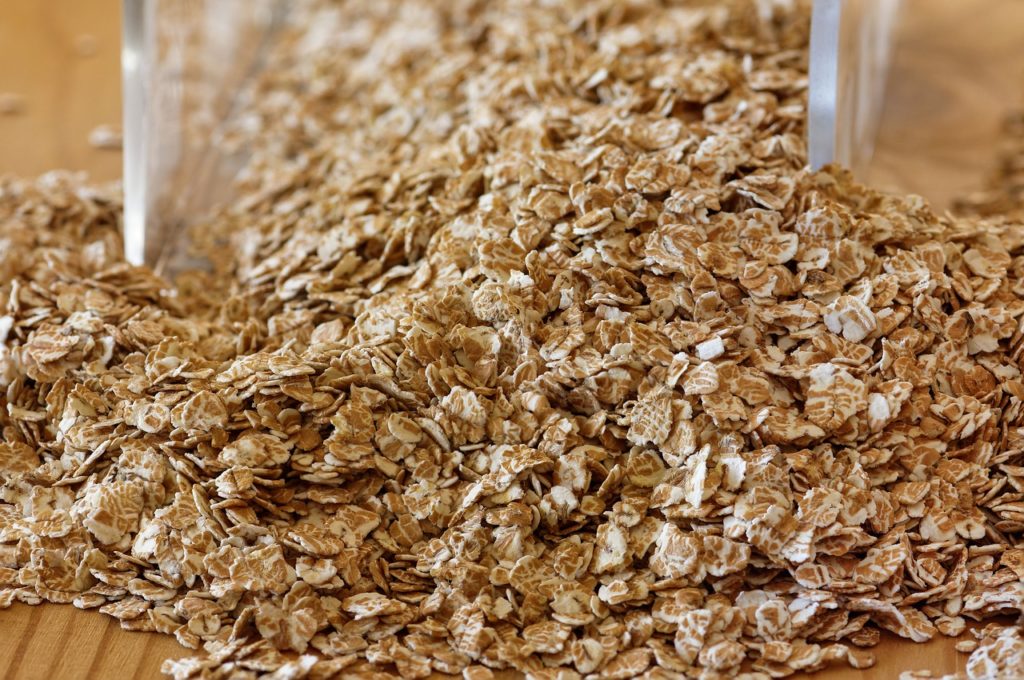
The wonderfood: Individuals who eat oatmeal for breakfast feel complete longer – even 4 hours after they put spoon to mouth! That’s sure to keep you out of the treat drawer mid-morning, improving your weight loss efforts. The immediate ranges frequently have actually added sugars and synthetic flavors and making slow-cooking oatmeal on the stove can add stress to your already rushed early morning regimen. The service: overnight oats. All you need to do to work up a bowl is fill a mason container or Tupperware container with grains, toppings, add-ins and a liquid like milk or water. Then you toss it in the fridge overnight. While you’re sleeping, the flavors fuse together so all you need to do is scarf it down next morning– no cooking required! Take a look at our favorite mouthwatering combos’ right here, with the 50 Best Overnight Oats Recipes
67. Amaranth
Amaranth porridge
Like quinoa, amaranth is not technically a grain, however the seed of an amaranth plant. Naturally gluten-free, amaranth is greater in muscle-building protein than wheat and brown rice– with more than 9 grams per cup – and remarkably high in other nutrients such as calcium and fiber as well. Amaranth is also an outstanding source of manganese, iron, and selenium, which keeps your thyroid in check and maintains elastin in the skin, helping your skin stay supple, smooth and tight. What’s more? Cooked amaranth leaves are a rich source of vitamin A, vitamin C, calcium, manganese, and folate.
68. Kamut Grain
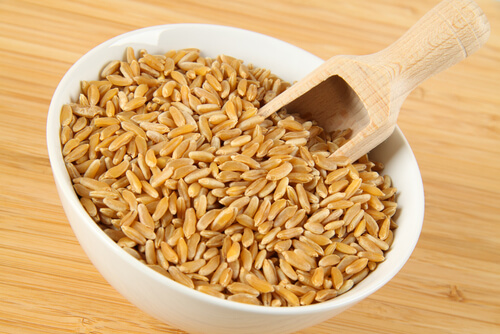
Kamut is an ancient grain belonging to the Middle East that is an excellent source of heart-healthy omega-3 fats, protein, and fiber, while concurrently being low in calories. In fact, a half-cup serving of the stuff has 30 percent more protein than regular wheat and simply 140 calories. What’s more? A research study released in the European Journal of Medical Nutrition found that eating kamut lowers cholesterol, blood sugar, and cytokines (which cause swelling throughout the body). Kamut’s ability to stabilize blood glucose and reduce swelling make it a terrific weight loss staple, specifically if it is used in place of nutritionally doing not have fine-tuned grains.
Dairy products
Not around your waist, but on your plate: A new report from the Credit Suisse Research study Institute found that more and more people are selecting whole-fat foods over skim, lite, fat-free or other modern names of leanness. And while numerous health companies like the American Heart Association still want us to reduce fat– especially saturated fat– this full-fat trend might be a healthy rebellion against those decades-old credos, according to recent research studies. Have a look at our favorite dairy items.
69. Gruyere Cheese
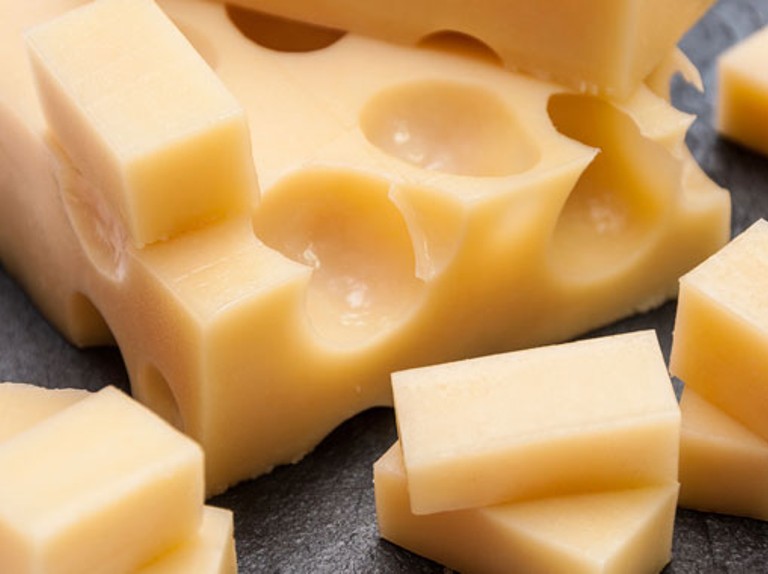
Here’s a reason for a wine-and-cheese hour: The elegant Swiss cheese includes 30% more protein than an egg in one piece, plus one-third of your RDA of vitamin A. If you’re seeking to indulge, keep you’re serving to the size of 4 dice, and moderate your vino to one glass for females, two glasses for males, to get the bad-cholesterol-lowering advantages of the antioxidant resveratrol. And better yet, adhere to the # 1 wine for rapid weight loss.
70. Parmesan Cheese
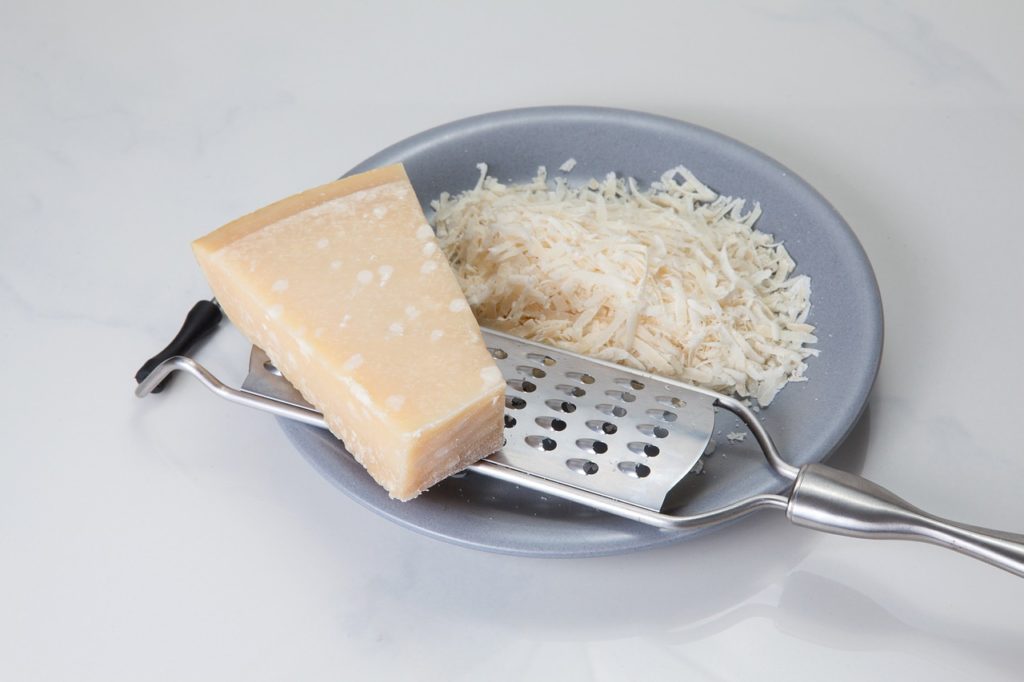
The majority of cheeses are naturally really low in sugar due to the fermentation process that produces it, and Parmesan cheese has the added benefit of in fact reducing belly-bloating sugar cravings. Parmesan contains the amino acid tyrosine (a foundation of protein) which has actually been shown to motivate the brain to release dopamine and another neurotransmitter, norepinephrine, getting rid of the desire for sweet stuff. What’s more? Parmesan is also low in carbs however loaded with other crucial nutrients. One ounce of the Italian cheese consists of about 31 percent of your day-to-day recommended consumption of bone-building calcium and 11 g of satisfying protein.
71. 2% Greek Yogurt
Fruit yogurt nuts
Yogurt may be among your crucial allies in weight-loss efforts. A research study printed in the British Journal of Nutrition discovered that probiotics like the ones discovered in creamy, delicious yogurt helped obese women lose nearly two times the weight compared to those who did not consume probiotics. Both sets of topics were on low-calorie diets, however after 12 weeks, the probiotic poppers lost an average of 9.7 pounds, while those on placebos lost just 5.7. Benefit: the topics who were offered the great bacteria continued to lose weight even after an additional 12 weeks, an average of 11.5 pounds to be accurate! Probiotics can assist ramp up your metabolism and improve your immune system, however it pays to be particular about your sources. Yogurt’s a fantastic method to get a.m. protein and probiotics, but to get the healthiest yogurt you’ll need to read labels; most are loaded with sugarcoated that exceed their protein levels.
72. Kefir
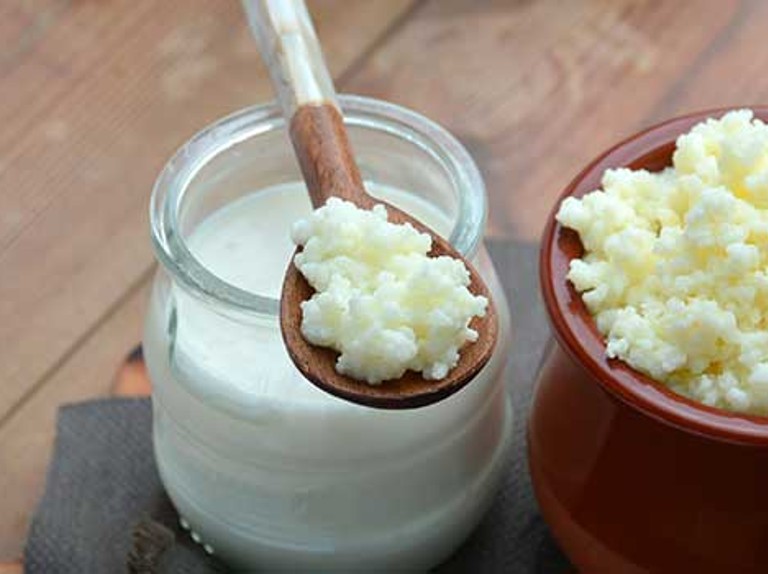
Kefir, fermented milk produced from grains, has actually been a rising dietary super star over the past couple of years thanks to the myriad of health advantages it uses. The smoothie-like dairy beverage is comparable to yogurt, it’s perfect for those with a dairy-intolerance since it has been discovered to neutralize the results of the milk’s stomach-irritating lactose. Furthermore, a review published in Nutrition Research study Reviews found that routine usage of kefir has actually been associated with enhanced digestion, anti-bacterial result, hypocholesterolaemic impact, control of plasma glucose, anti-hypertensive effect, anti-inflammatory effect, antioxidant activity, anti-carcinogenic activity, anti-allergenic activity, and healing effects.
An Organically raised cows are exempt to the same hormonal agents and antibiotics that traditional cows are; no prescription antibiotics for them means no antibiotics for you. Yard fed cows have been shown to have greater levels of omega-3 fatty acids (excellent) and 2 to five times more CLA (conjugated linoleic acid) than their corn and grain fed equivalents. CLA includes a group of chemicals which offers a variety of health advantages, consisting of immune and inflammatory system assistance, enhanced bone mass, improved blood glucose guideline, decreased body fat, decreased risk of cardiovascular disease, and upkeep of lean body mass. While skim milk may be most affordable in calories, numerous vitamins are fat-soluble, which implies you will not get all the benefits of the alphabetical nutrients noted on your cereal box unless you opt for at least 1%.
Nuts & Seeds
73. Pistachios
Hang out at a local bar and you make certain to come throughout a variety of nuts (the food, not individuals hanging out in the corner) – and guys popping them like they’re diet freebies. It’s the ideal example of great food spoiled. Nuts, like avocados, are loaded with heart-healthy fats. But healthy doesn’t constantly suggest lean. A number of beers and a few handfuls of nuts and you have actually racked up some severe calories– and diet plan damage. “A one-ounce serving of nuts contains 135 calories, and the number of nuts you get in a serving will depend upon your nut of choice,” says Tanya Zuckerbrot, RD. “Think about it: Would you rather have 12 cashews or 22 almonds?” Here are our preferred nuts and seeds.
74. Chia Seeds
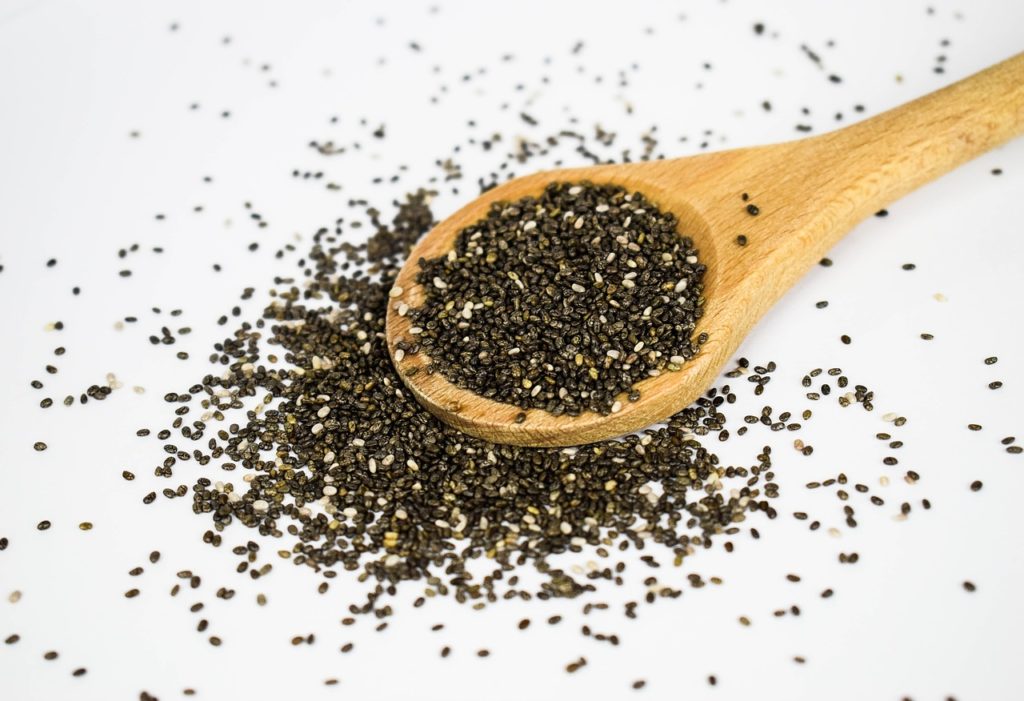
One of the trademarks of a balanced diet plan is to have a good ratio of omega-6 fatty acids to omega-3s. A 4:1 ratio would be perfect, however the contemporary American diet is more like 20:1. That leads to swelling, which can trigger weight gain. But while consuming a serving of salmon every day isn’t exactly practical, sprinkling chia seeds – amongst the most highly concentrated sources of omega-3s in the food world– into smoothies, salads, cereals, pancakes or even desserts is as simple a diet upgrade as you can get.
75. Flaxseed
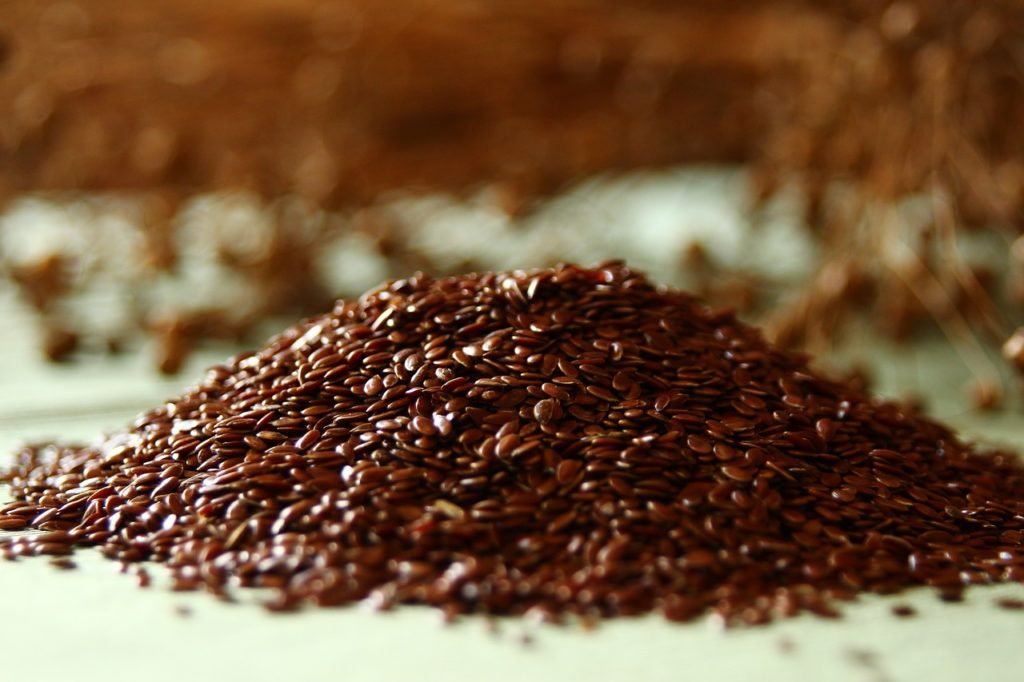
Flaxseed is nutritious at any age, however they might be particularly beneficial as you age viewing as how it has actually been shown to reduce high blood pressure, thus reducing your opportunities of having a cardiac arrest or stroke. According to a study in Natural Medicine Journal, participants were divided into two groups and both consumed a variety of foods, including bagels, muffins, and buns. While one group received included flaxseed amounting to 30 g of milled flaxseed every day for one year, the other group was given a placebo. After 6 months, both systolic and diastolic blood pressures were lower in the flaxseed group, Furthermore, flax group participants who began with raised blood pressure had more noticable reductions in blood pressure than those who were not given flaxseed.
76. Sesame Seeds

Sesame seeds likely aren’t one of those foods you pay any mind to, however the crispy little buggers have actually been shown to play an important role in weight upkeep and deserve to be tossed into a salad or entire wheat noodle dish. Researchers believe it’s the lignans– plant compounds– discovered in sesame seeds (and flax seeds) that makes them so unique. In a 2015 research study, ladies who consumed high levels of lignans tended to weigh less and get less weight gradually when compared to ladies who didn’t consume these compounds in high quantities. Not a fan of that seedy texture? Try slathering some sesame-based tahini on a piece of bread instead.
77. Mustard Seed
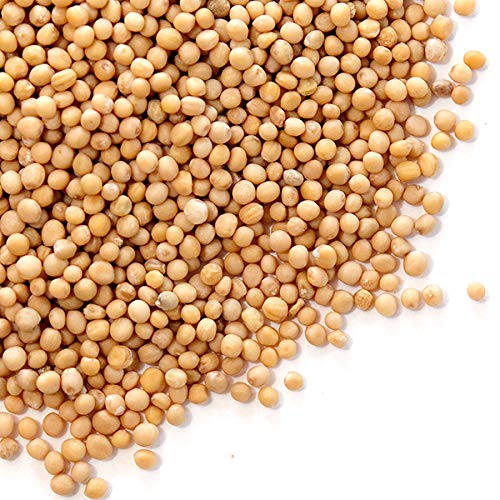
Scientists at England’s Oxford Polytechnic Institute discovered that by consuming 1 teaspoon of prepared mustard (about 5 calories) can improve the metabolism by approximately 25 percent for a number of hours after eating. Not only that, a research study published in the Asian Journal of Clinical Nutrition found that visceral fat of rats fed a diet of pure lard was reduced when the diet plan was supplemented with mustard oil. Researchers attribute mustard’s belly-blasting abilities to allyl isothiocyanates, phytochemicals that offer the popular condiment its characteristic taste.
78. Shelled Pumpkin Seeds

Dr. Lindsey Duncan, a nutritionist who’s worked with Reggie Bush, is a big fan of pumpkin seeds. “A handful of raw pepitas or dry roasted pumpkin seeds can offer you a natural shock to power through an exercise,” he says. “They’re a good source of protein, healthy fats and fiber, keeping you feeling full and stimulated longer, and contain manganese, magnesium, phosphorus and zinc, which supply additional energy assistance to take full advantage of health club time.” Toss them into salads and rice meals, or consume them raw.
79. Almonds
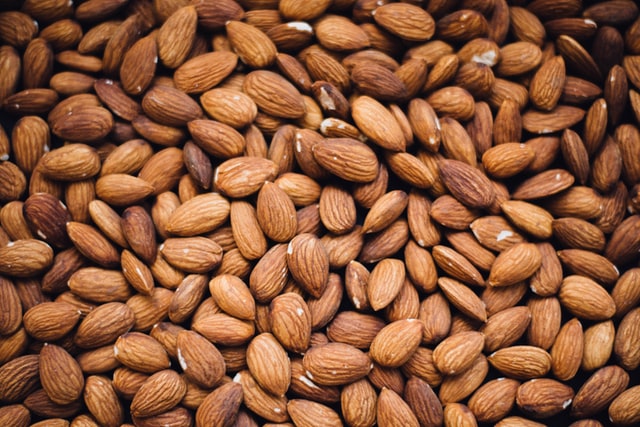
Think of each almond as a natural weight-loss tablet. A study of obese and obese grownups discovered that, integrated with a calorie-restricted diet, consuming a little more than a quarter-cup of the nuts can decrease weight better than a snack consisted of intricate carbohydrates and safflower oil– after simply two weeks! (And after 24 weeks, those who ate the nuts experienced a 62% greater reduction in weight and BMI!) For optimal outcomes, eat your daily serving prior to you hit the gym. Almonds, abundant in the amino acid L-arginine, can really assist you burn more fat and carbs during exercises, a study printed in The Journal of the International Society of Sports Nutrition discovered.
80. Pistachios
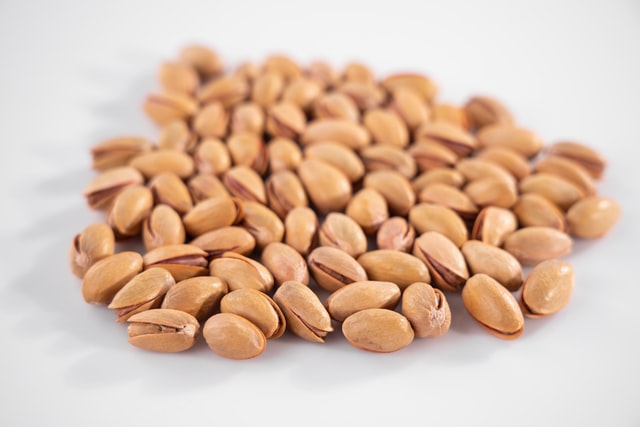
As it turns out, almonds aren’t the only super star nuts around. Research studies have shown pistachios aren’t bad to treat on either. UCLA Center for Human Nutrition researchers divided research study individuals into 2 groups, each of which were fed a nearly identical low-cal diet plan for 3 months. One group was given 220-calories of pretzels as an afternoon snack, while the other sect chewed on 240-calories worth of pistachios. About a month into the research study, the pistachio group had decreased their BMI by a point and improved their cholesterol and triglyceride levels, while the pretzel-eaters stayed the very same.
81. Walnuts
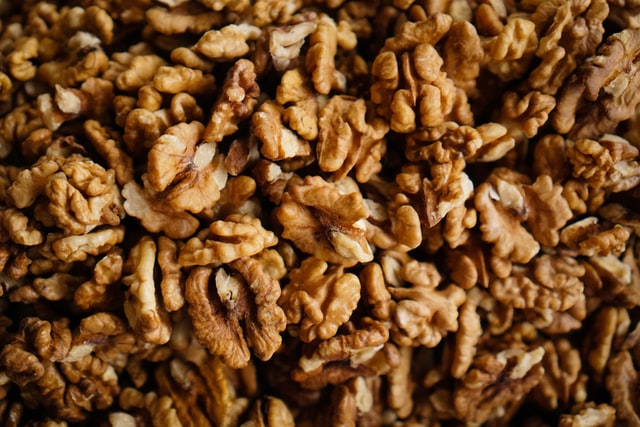
You understand those heart-healthy omega-3 fats you keep hearing so much about? Walnuts have more of those healthy substances than any other nut, which is factor alone to toss a handful of ’em onto a salad or consume them as part of a protein-packed snack, and they’re not doing not have in other nutrients either. Research has actually shown they might be specifically advantageous to take in as you age. According to the Walnuts and Healthy Aging (WAHA) research study, which is currently being carried out by researchers from the Health center Center of Barcelona and Loma Linda University, preliminary findings recommend daily walnut intake favorably affects blood cholesterol levels without negative impacts on body weight amongst older grownups. Scientist advised 707 healthy older adults to add day-to-day doses of walnuts (roughly 15 percent of calorie intake) to their normal diet plan or to consume their typical diet plan without nuts. After one year, the study found that both diet plans had very little effect on body weight, triglycerides, and HDL cholesterol, nevertheless, the walnut-diet led to substantial LDL cholesterol reductions compared to the control, nut-free diet.
82. Brazil Nuts
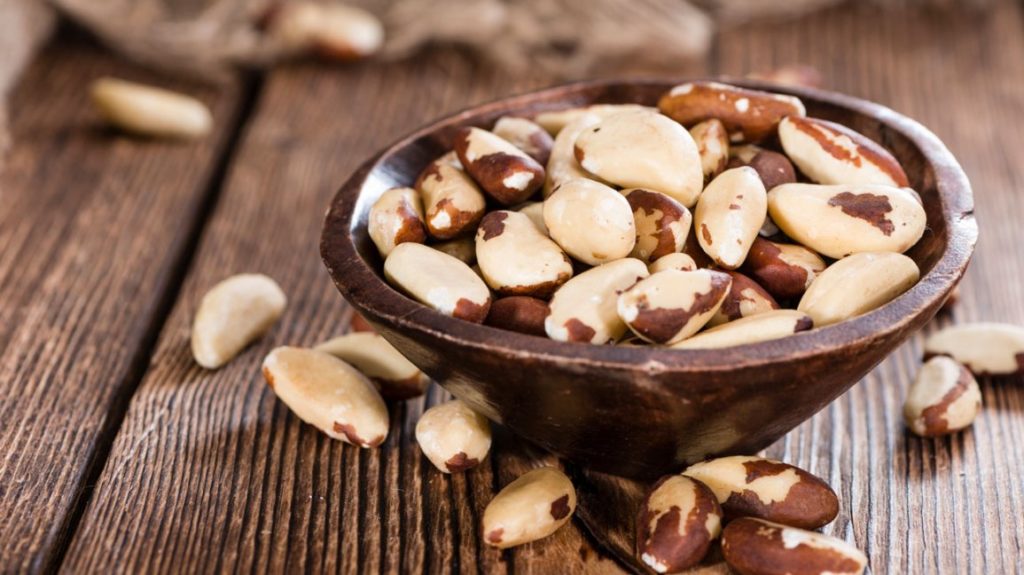
Like lots of other nuts, Brazil nuts are an excellent source of fiber, protein, and calcium, but they’ve also been revealed to be especially useful in fighting prostate cancer thanks to their outstanding magnesium and selenium material. In fact, a study that appeared in the Journal of the National Cancer Institute found that the inverse association between baseline plasma selenium levels and risk of advanced prostate cancer suggests that greater levels of selenium might slow prostate cancer tumor development.
83. Cashews
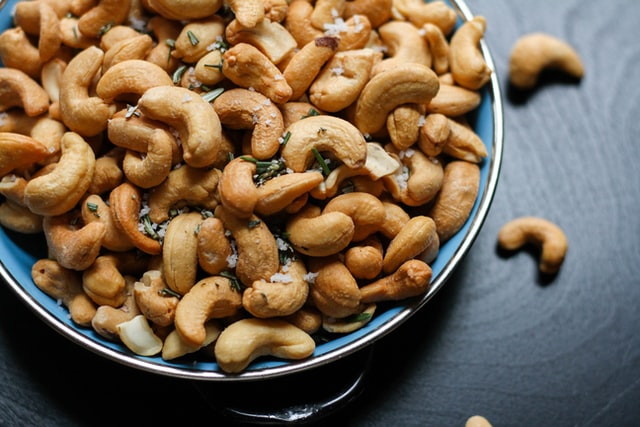
Cashews are excellent source of protein, phosphorus, magnesium, calcium and copper, and should not be neglected as one of your go-to nuts. Magnesium boasts a myriad of health advantages such as helping your body alleviate various conditions like constipation, insomnia, headaches and muscle cramps, as well as controling the immune system and supporting brain function. They likewise contain an excellent quantity of biotin, which will help keep your locks shiny and lustrous.
Fats
Different cooking oils
Here’s your new mantra: Eat fat to lose fat.
It’s true: Our bodies require dietary fat– particularly healthy oils– in order to drop weight and function properly. The right kinds of fats and oils assist quash hunger, maximize your metabolic process, and speed nutrients through your body. But not all oils are created equivalent: Some are downright bad (like Trans fats in margarines), while some fats are just confusing (what’s a canola look like, anyways? And what’s this about an extra virgin?).
These oils have the highest levels of heart-healthy omega-3 fats, monounsaturated fats, and lauric acid (all great for you), lower levels of omega-6 fatty acids and hydrogenated fats (not so great for you), and absolutely no trans fats (avoid at all costs).
84. Coconut Oil
Coconut oil melted
Why It’s Terrific: Drawn out from the meat of fresh coconuts, this tropical oil is a great source of the medium-chain saturated fat, lauric acid, which converts into energy more quickly than other kinds of fat. Picking coconut oil over other less healthy fats, like lard and margarine, suggests less flubber is apt to be saved on your frame. (Switching your basic cooking oil for this unique variation is one of our weight-loss techniques you haven’t attempted
How to Use It: This fashionable oil can be utilized for anything you might utilize butter for, from frying to baking; utilize it for cookies, cakes, and pancakes. It’s so healthy, you’ll discover it in a few of the No Stomach Diet healthy smoothies. It likewise tastes fantastic on toast and sprinkled over homemade baked sweet potato “fries” with a little garlic powder, salt and pepper. Coconut oil breaks down when exposed to super high temperatures, so don’t deep-fry with it.
85. Peanut Oil
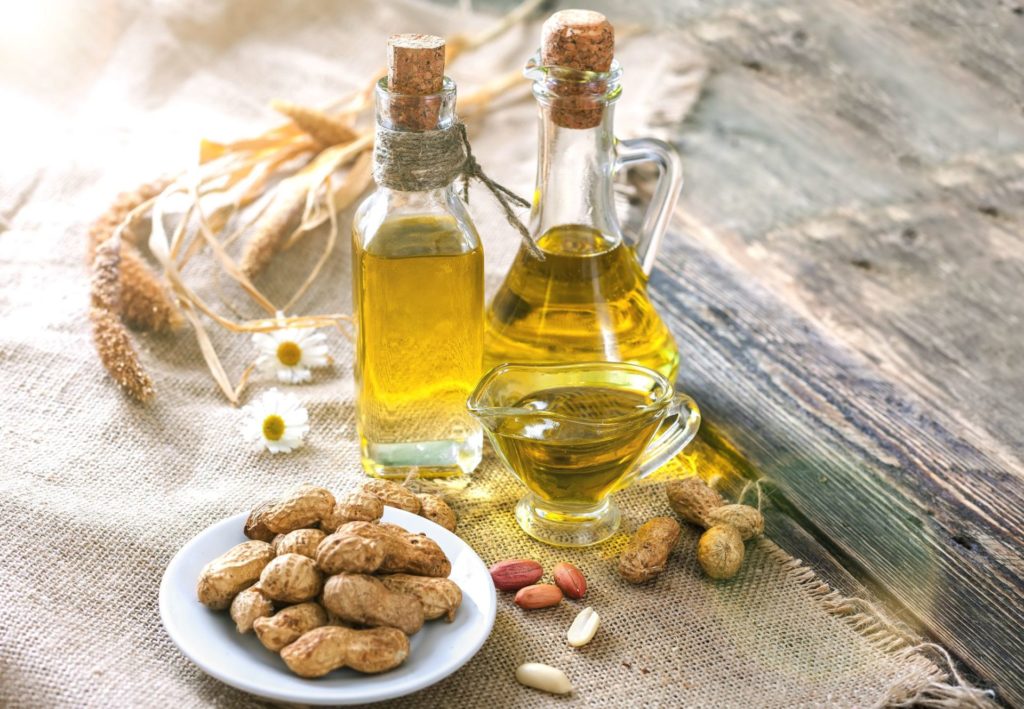
Why it’s Excellent: Peanut oil is loaded with a monounsaturated fat called oleic acid (OEA) which can help reduce cravings and promote weight-loss. Plus, research study out of the University of California, Irvine, discovered that this specific kind of fat boosts memory. Don’t forget it next time you prepare.
How to Utilize It: Because of its high smoke point, peanut oil need to be your go-to oil for frying and many high-heat tasks like wok-cooking and pan-searing.
86. Avocado Oil
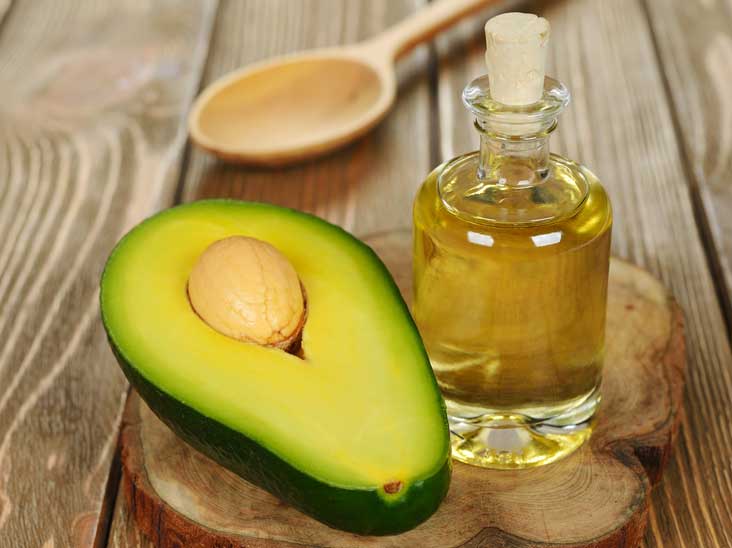
Why It’s Terrific: Made from pushed avocados, this oil is abundant in heart-healthy monounsaturated fats that might assist improve cholesterol and ward off hunger. It also includes vitamins B and E and bloat-banishing potassium– it’s no surprise that it is among the preferred Paleo diet plan fats.
How to Utilize It: Like a salad oil. The oil has a moderate nutty taste and a light avocado scent. It works well drizzled over breads, fish, and homemade pizzas. It likewise pairs perfectly with watermelon, grapefruit and oranges. Include some to your fruit salad to produce a new twist on a timeless dish.
87. Macadamia Nut Oil
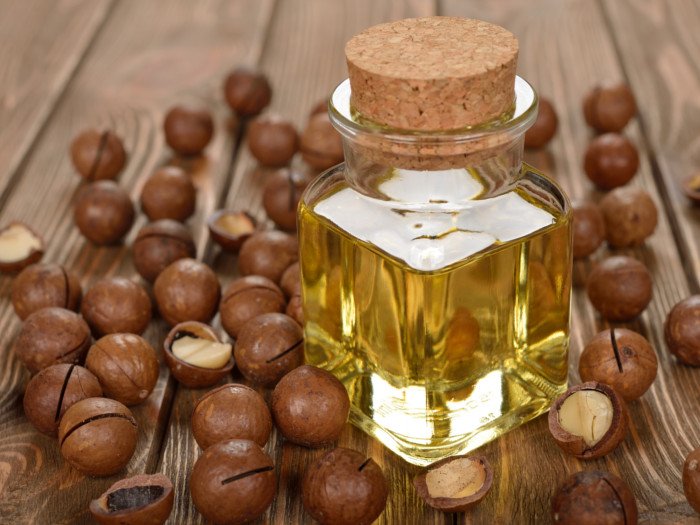
Why It’s Terrific: You’ll need to hunt around in the specialty stores for it, however this vibrant and buttery oil may be the healthiest you’ll find: Eighty-four percent of the fat in macadamia nuts is monounsaturated, and it has an extremely high percentage of omega-3s fats. It’s also a source of phytosterols, a plant-derived substance that has actually been related to decreased cancer danger.
How to Utilize It: Due to its medium to high smoke point, macadamia nut oil is finest matched for baking, stir frying and oven cooking. For a fast snack, toss slices of sweet potatoes with the nut oil and bake in the oven on 350 degrees for 20 minutes or up until crispy.
88. Extra Virgin Olive Oil
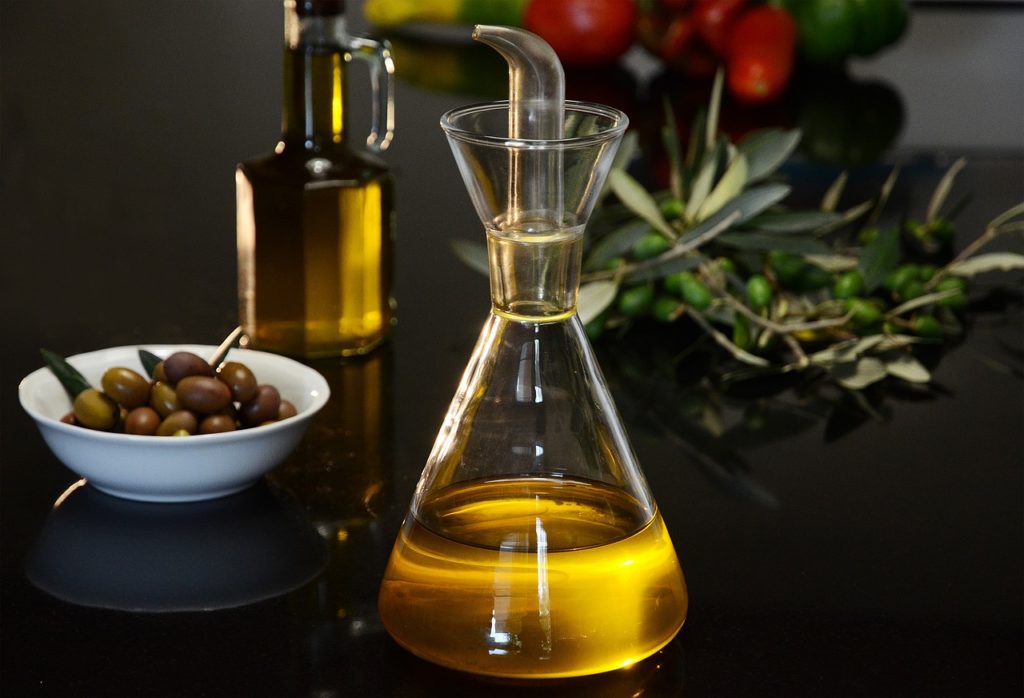
Why it’s great: Bonus virgin olive oil might increase blood levels of serotonin, a hormone related to satiety. Plus, olive oil is also loaded with polyphenols, antioxidants that help fight lots of illness such as cancer, osteoporosis and brain wear and tear.
How to Use It: Pricey extra-virgin, with its robust taste, ought to be saved to dress salads, vegetables and cooked dishes. For cooking purposes, routine or light olive oil suffices.
89. Walnut Oil
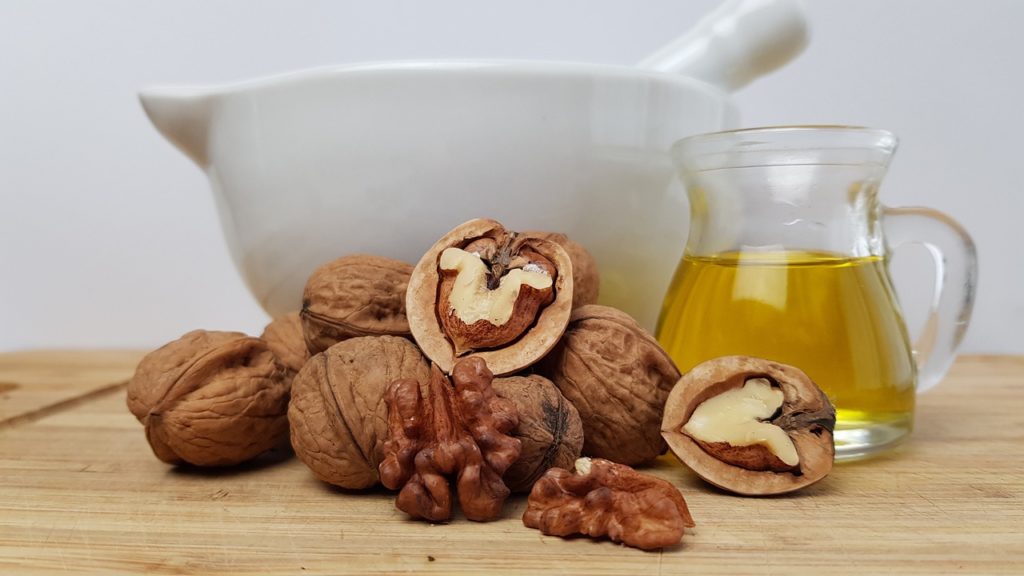
Why it’s Excellent: Recently making a splash on restaurant menus and grocery store shelves, this oil has an abundant nutty, roasted flavor. A small Pennsylvania State research study found that a diet abundant in walnuts and walnut oil might help the body react better to tension and can likewise assist keep diastolic high blood pressure levels down. Walnut oil is likewise abundant in polyunsaturated fats which may increase diet-induced calorie burn and resting metabolic rate (the calories we utilize to keep our heart pumping and body running). And walnuts have more omega-3 fatty acids than any other nut.
How to Use It: Combine with sherry vinegar, olive oil, cumin and a pinch of salt and pepper to make a salad dressing. This oil does not do well under heat, so it should not be utilized for hot surface cooking or high temperature baking.
90. Canola Oil
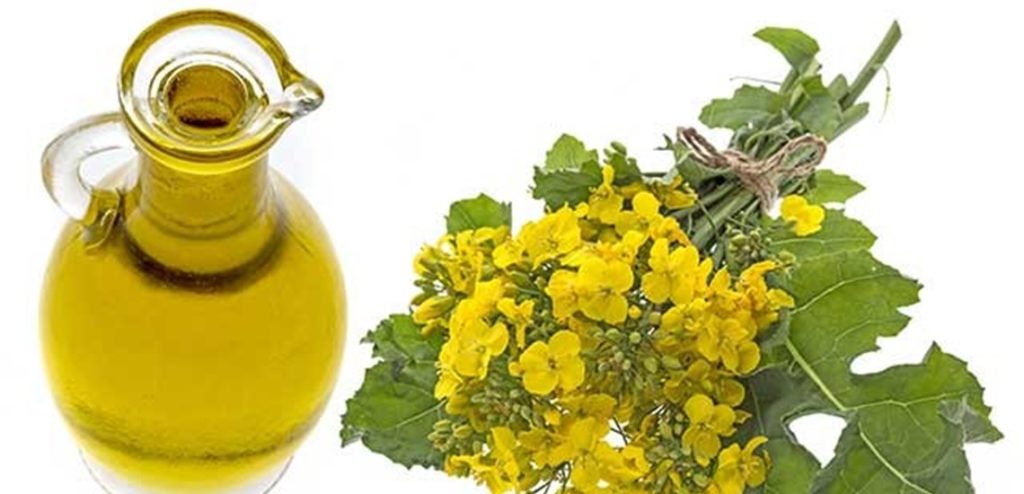
Why it’s great: Canola, stemmed from the seeds of a plant in the broccoli family, can be found in toward the top of our list with its near-perfect 2.5:1 ratio of omega-6 to omega-3 fats. According to a research study review published last year in Experimental Biology and Medicine, individuals who attain a dietary ratio similar to this have had the ability to fight cancer, arthritis and asthma more effectively. It’s likewise rich in alpha-linolenic acid (ALA), a necessary omega-3 fat that may play a role in weight maintenance, according to a recent study.
How to Utilize It: This is the best alternative for daily cooking scenarios. Canola oil can stand up to relatively high levels of heat, and its flavor is relatively neutral, so it won’t control a dish.
91. Flaxseed Oil
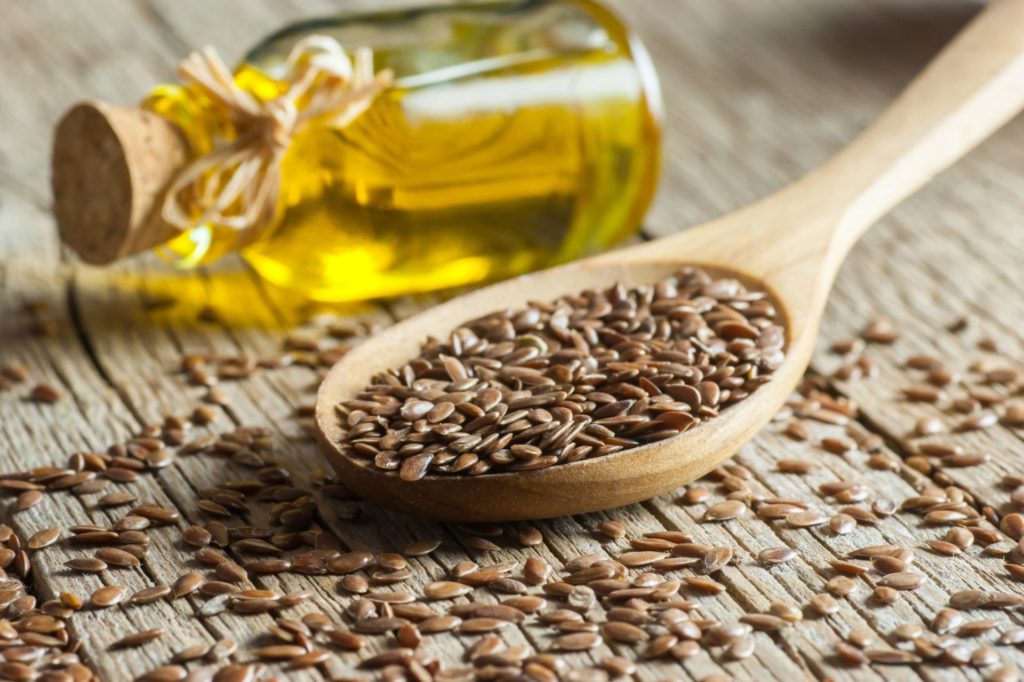
Why It’s Fantastic: Also known as linseed oil -yes, the stuff you utilized in art class – this fat consists of ALA, an a necessary omega-3 fat that can assist weight upkeep and might minimize heart problem threats by promoting capillary health and minimizing inflammation. This oil can also be used topically to eliminate carpal tunnel syndrome, according to a 2014 Iranian scientific trial.
How to Utilize It: Flaxseed oil doesn’t hold up well when exposed to heat. Drizzle it on top of salads or utilize it instead of olive oil or mayo when whipping up pestos, tuna salads and sauces. Or pour into a smoothie!
Spices
Wars were fought over them, very popular pop groups were named after them and new continents were discovered in search of them. But prior to them were money or symbols of Girl Power, spices were medicines– healers that go back to the world’s very first civilizations.
The 21st century brings a brand-new chapter to the spice world story: one of scientific expedition. Today’s researchers are finding amazing health and dietary riches in spices. From balancing blood sugar to improving brain power, and even promoting weight reduction, here are 5 of the healthiest spices in the world– plus useful suggestions for making the very best purchase for the ultimate recovery spice rack!
92. Cocoa/Dark chocolate
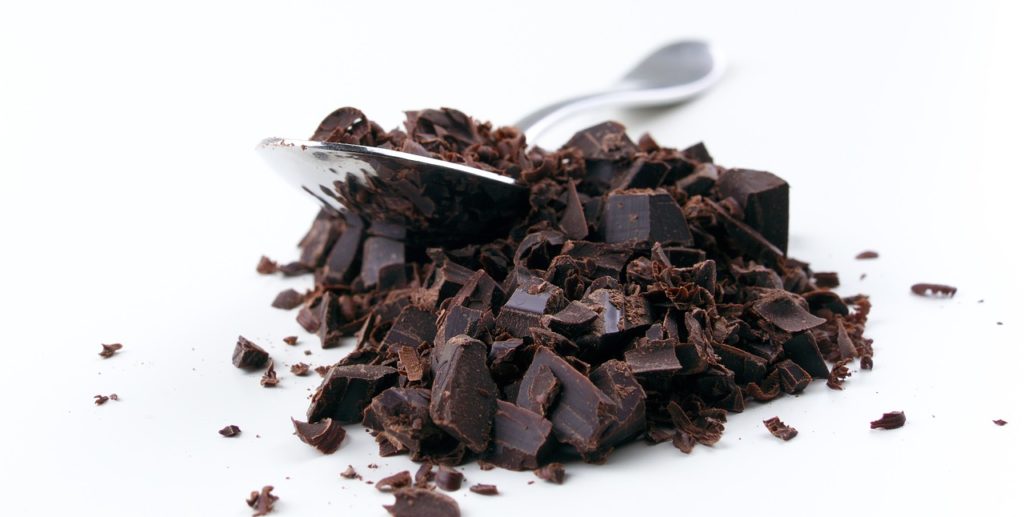
How sweet it is! Lots of research studies reveal that people who take in cocoa– as a hot drink or consumed as dark chocolate– remain in far better cardiovascular shape than those who do not. One nine-year study in the journal Blood circulation Heart Failure discovered women who ate one to 2 servings of high-quality chocolate weekly had a 32 percent lower risk of establishing heart failure than those who said no to the cocoa. Researchers associate cocoa’s health benefits to polyphenols and flavanols, anti-inflammatory compounds that help secure the heart in a number of ways. The benefits don’t stop at the heart. Research studies have actually shown this sweet spice can assist manage inflammation-related diseases such as diabetes, liver cirrhosis, and degenerative illness of the brain like Alzheimer’s.
Get the advantages: The most healthful dark chocolate consists of 74 percent or more cocoa solids, but if you’re serious about a healthier heart, don’t buy anything under 60 percent cacao. We like Lindt’s 85% Cocoa Excellence bar. The chocolate in this bar isn’t alkalized – a process that removes out the bitterness at the cost of the cocoa’s natural, healthy compounds – and you can take pleasure in four indulgent squares for just 230 calories and 5 grams of sugar. The rule of thumb for buying cocoa: The bitterer, the better!
93. Cinnamon
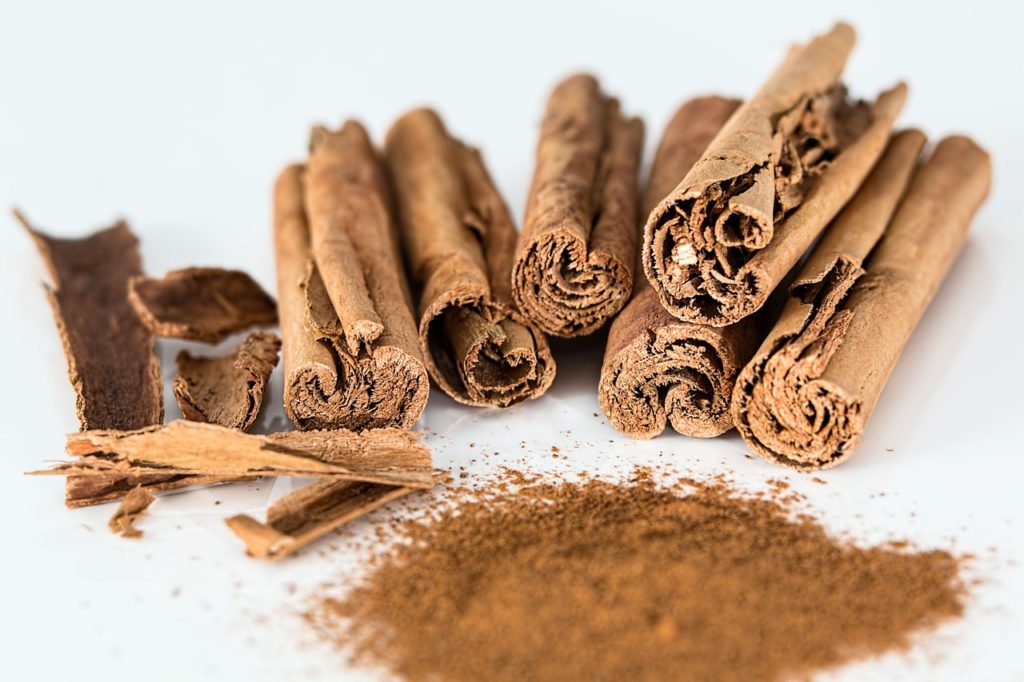
Get the benefits: Will the genuine cinnamon spice please stand up? Cassia cinnamon is the variety you’re most likely to find at the grocery store, but its ceylon cinnamon, a milder, more expensive range that’s touted by health experts. You can find real cinnamon online or in Indian markets and spice shops. It’s a vital part of the 150+ recipes for weight reduction in absolutely no Stomach Cookbook!
Paradoxically, (or maybe nature’s method of cutting us some slack) cinnamon – the warm spice that offers sweet baked goods extra flavour – can help manage blood sugar level and prevent against diabetes. One research study discovered that adding a heaping teaspoon of cinnamon to a starchy meal is as efficient as older generation diabetes drugs at supporting blood sugar and warding off insulin spikes. There are other health advantages of cinnamon: studies have shown the spice might enhance cholesterol, ward off the impacts of Alzheimer’s, and offer treatment for females with Polycystic Ovary Syndrome (PCOS).
94. Turmeric
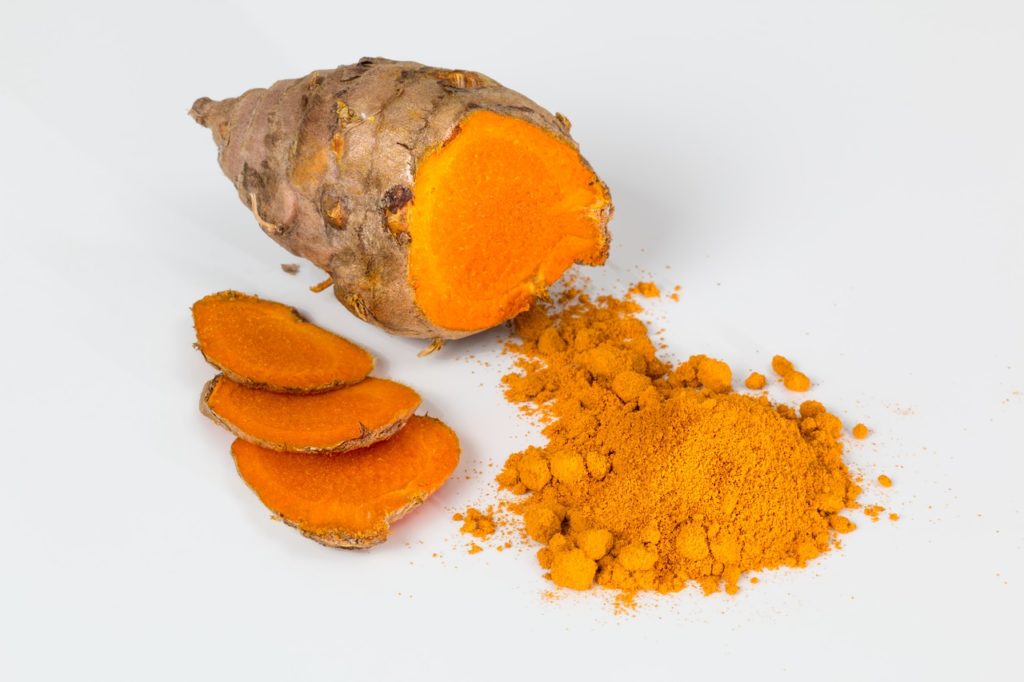
As soon as described as “Pauper’s Saffron” because of its deep yellow color, turmeric is now promoted by health professionals as the “Golden Spice of Life.” Conventional to Indian cooking, turmeric owes its health advantages to the active component curcumin, an effective antioxidant revealed to launch its anti-inflammatory goodness to almost every cell in the body, increasing the body immune system and dealing with a host of ailments from indigestion to cancer. The most current research study shows turmeric may be a reliable treatment for brain illness. One recent study discovered that individuals at risk of cognitive problems who added one gram of turmeric to breakfast showed substantially enhanced working memory after just 6 hours. There’s likewise a growing body of research into the function of curcumin in the prevention and treatment of Alzheimer’s disease.
Get the advantages: Turmeric is the only edible source of curcumin, so you wish to sneak it into your diet as much as possible. While the spice is normal of curries, it’s not to be puzzled with curry powder– a mix of spices that includes turmeric. Look for turmeric from Alleppey, which has twice the curcumin than turmeric from Madras. The raw spice is rather extreme, so it’s finest delighted in prepared in meals like a stir-fry or stew. You can likewise utilize it a spices for meat, poultry, and fish.
95. Ginger
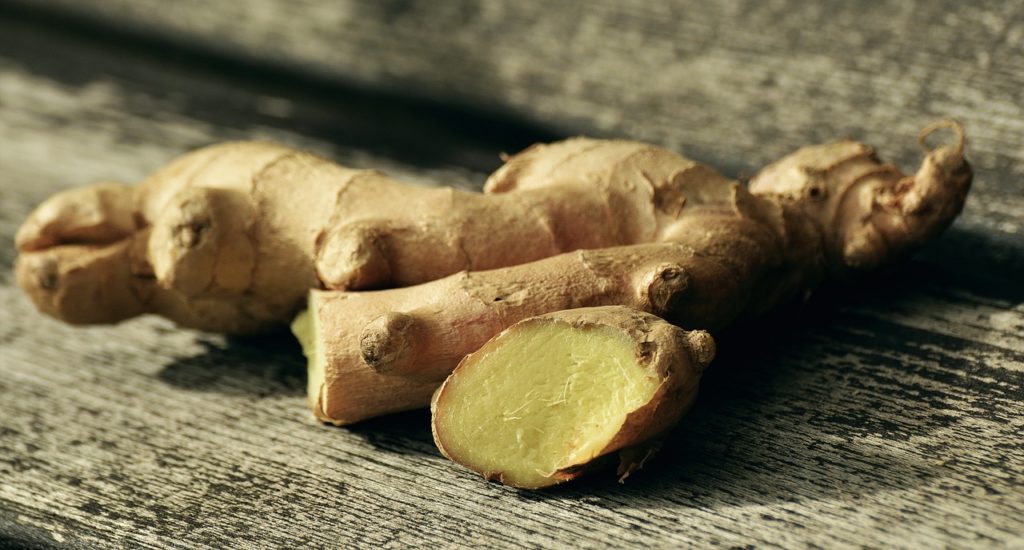
Utilized for countless years to tame distressed bellies and help digestion, ginger is pointed out in Chinese medical texts from the fourth century BC! And for the past couple of years, scientists have been showing ginger works at silencing that queasy feeling. A significant body of research study paints ginger as a powerful muscle relaxant which helps in reducing discomfort brought on by workout by as much as 25 percent, in addition to banishes bloat. Researchers attribute ginger’s health advantages to gingerols, substances that are antioxidant, anti-inflammatory, antibacterial– and anti-disease. Research studies suggest ginger might reduce symptoms of arthritis, improve cholesterol, and prevent cancer.
Get the benefits: Fresh ginger is wealthiest in gingerol– the compound that adds to a number of the spice’s health benefits. When purchasing the dried spice, researchers say you’ll get the most gingerol from natural varieties. Ginger is simply one of remarkable IBS remedies!
96. Garlic
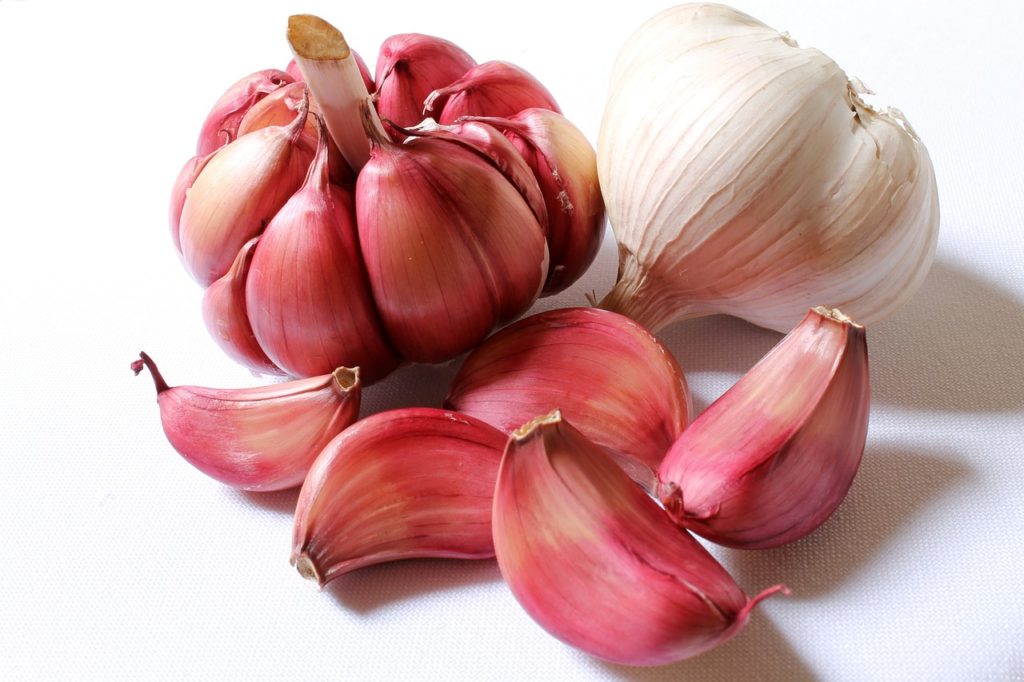
If you were to ask yourself, “Is there anything garlic can’t do?” the short answer to that concern would be “No.” An evaluation in Nutrition Journal showed the spice responsible for halitosis can likewise avoid and treat a myriad of cardiovascular and metabolic diseases, such as thrombosis, high blood pressure, and diabetes. More specifically, garlic has actually been revealed to help reverse early heart problem by getting rid of plaque accumulation in arteries. A 2016 study released in the Journal of Nutrition involved 55 patients, aged 40 to 75 years, who had been detected with metabolic syndrome. The outcomes of the research study revealed that aged garlic extract successfully reduced plaque in coronary arteries (the arteries providing blood to the heart) for clients with metabolic syndrome.
97. Cilantro
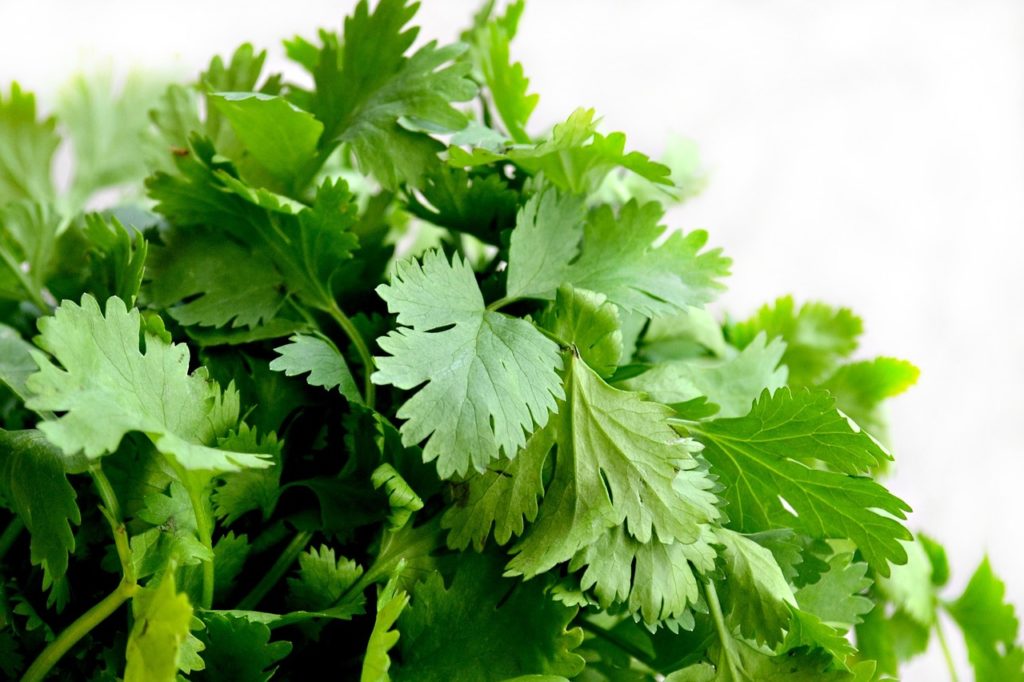
Technically not a spice, cilantro is more than just a pretty garnish. The herb, though polarizing in regards to taste, includes a distinct blend of oils that work similar to over-the-counter meds to relax digestive muscles and minimize an “overactive” gut. A study published in the journal Digestion Illness and Science discovered that clients with IBS gained from supplementing with cilantro instead of placebo due to the fact that their stubborn bellies weren’t as bloated.
98. Rosemary
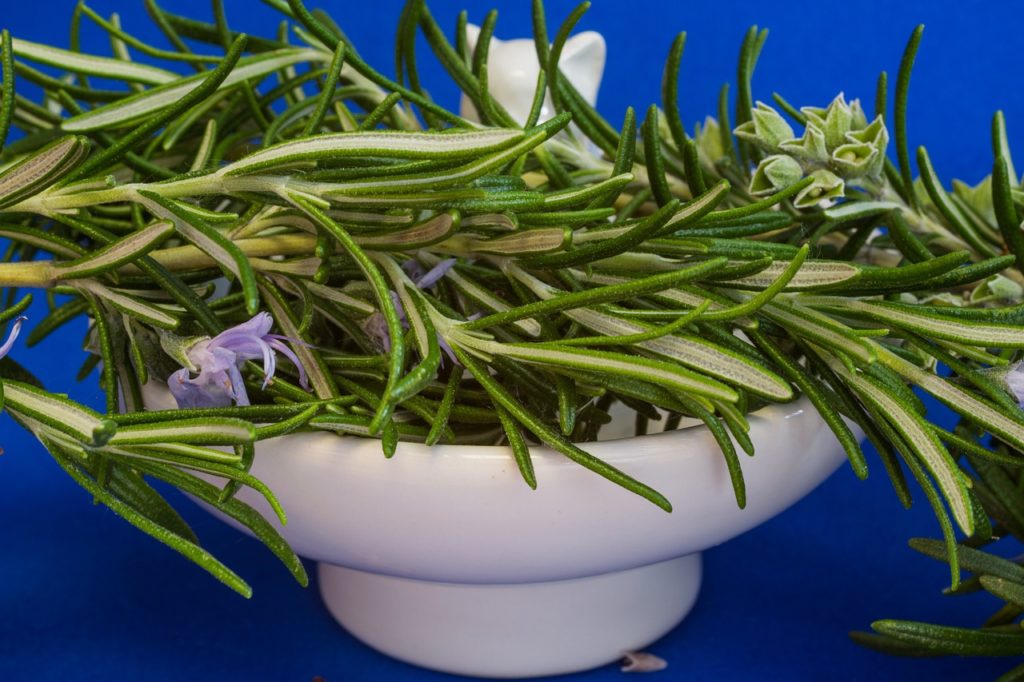
Again, though it’s not technically a spice, rosemary is worthy of acknowledgment beyond being sprinkled over a roast chicken. That’s due to the fact that this tasty herb is an effective anti-inflammatory thanks to its high concentration of antioxidant substances. Scientists believe the anti-inflammatory activity comes from the existence of carnosic acid and carnosol, 2 polyphenolic substances in rosemary which a BMC Complementary and Alternative Medicine study found could efficiently prevent the production of pro-inflammatory cytokines.
99. apple cider vinegar

Apple cider vinegar, or ACV for short, is a kind of vinegar made from fermented apples that has a distinct amber hue and a multitude of health advantages. For beginners, it has actually been shown to peaceful cravings hormones. According to a Bioscience, Biotechnology, & Biochemistry research study, consuming apple cider vinegar every day can cause weight reduction, lowered stomach fat, waist area, and lower blood triglycerides. More specifically, the study of obese Japanese individuals discovered that those who consumed 1 tablespoon of ACV over a three month period lost 2.6 pounds, and those who consumed 2 tablespoons lost 3.7 pounds in the exact same time frame.
100. Chili
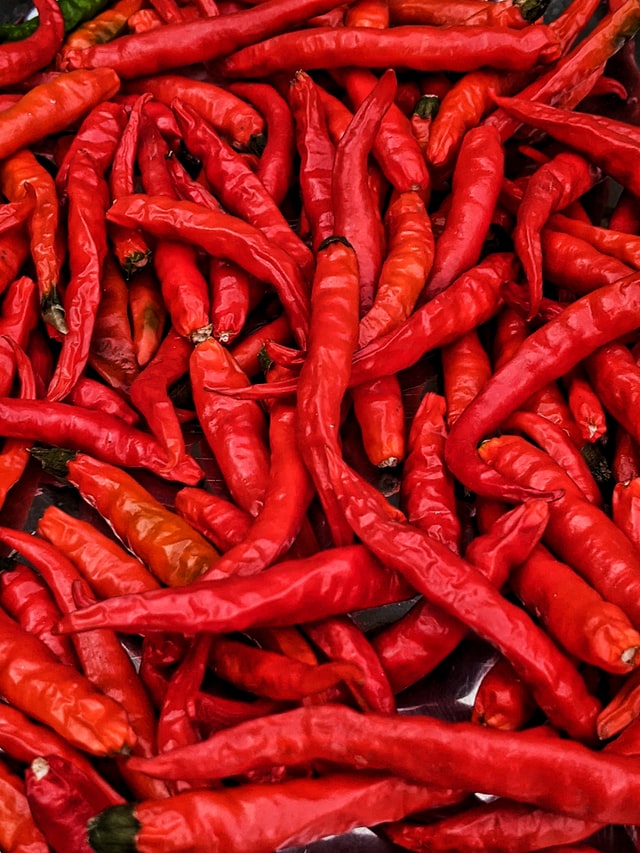
The health benefits of the red-hot spice range from reducing blood pressure cleaning up sinus swelling. The most popular research study revolves around weight loss. Fiery capsaicin, the substance that provides chiles their signature kick, has actually been revealed to increase temperature, boost metabolic rate and decrease hunger. Scientists are currently looking at turning capsaicin into an all-natural anti-obesity supplement for its ability to trigger our “good,” calorie-burning brown fat shops. Scientists say capsaicin’s weight-loss benefits take place at a molecular level by altering key proteins discovered in fat.
Facebook Comments
